


。Throughout the year, the ArchDaily team is committed to continuously expanding the online library for architectural design, interior design, and landscape design, striving to showcase the most inspiring and innovative completed works and achieve diversified representativeness. This year, a total of 4144 projects were released, covering multiple cultural backgrounds, reflecting innovation, diversity, society, and equity, and achieving breakthroughs in design concepts, urban connections, functional forms, structural scales, streamline colors, signage systems, completion, material applications, and sustainability.
This year's works are quite diverse, especially in terms of material usage. Each region focuses on the procurement of local building materials and innovative applications, making these projects not only deeply rooted in their local culture and promoting the local economy, but also demonstrating a positive response to global sustainable development issues.
Continue reading to learn about the 10 most common building materials and related excellent works selected by ArchDaily from the 2024 completed projects published this year.
01
Concrete
Time Tower
Design: OPEN Architecture Firm
Address: Yantai, China
The Time Tower was designed by OPEN Architecture and is located by the Jinshatan Beach in the Huanghai Bohai Development Zone of Yantai, Shandong. It is a multifunctional public building that includes an outdoor theater, an aerial library, a digital exhibition gallery, coffee and leisure facilities, and a unique semi outdoor "modern building" at the top, resembling a space.
The parabolic inner shell facing the sea is like a sound collector, absorbing and amplifying the sound of the nearby sea. The lower part is a semi outdoor theater, and the ramp space that rises between the two layers of concrete shells is a multifunctional digital exhibition hall. People shuttle back and forth, and every moment when the slope turns, it is a sea view experience at different heights.

©lwan Baan

©lwan Baan
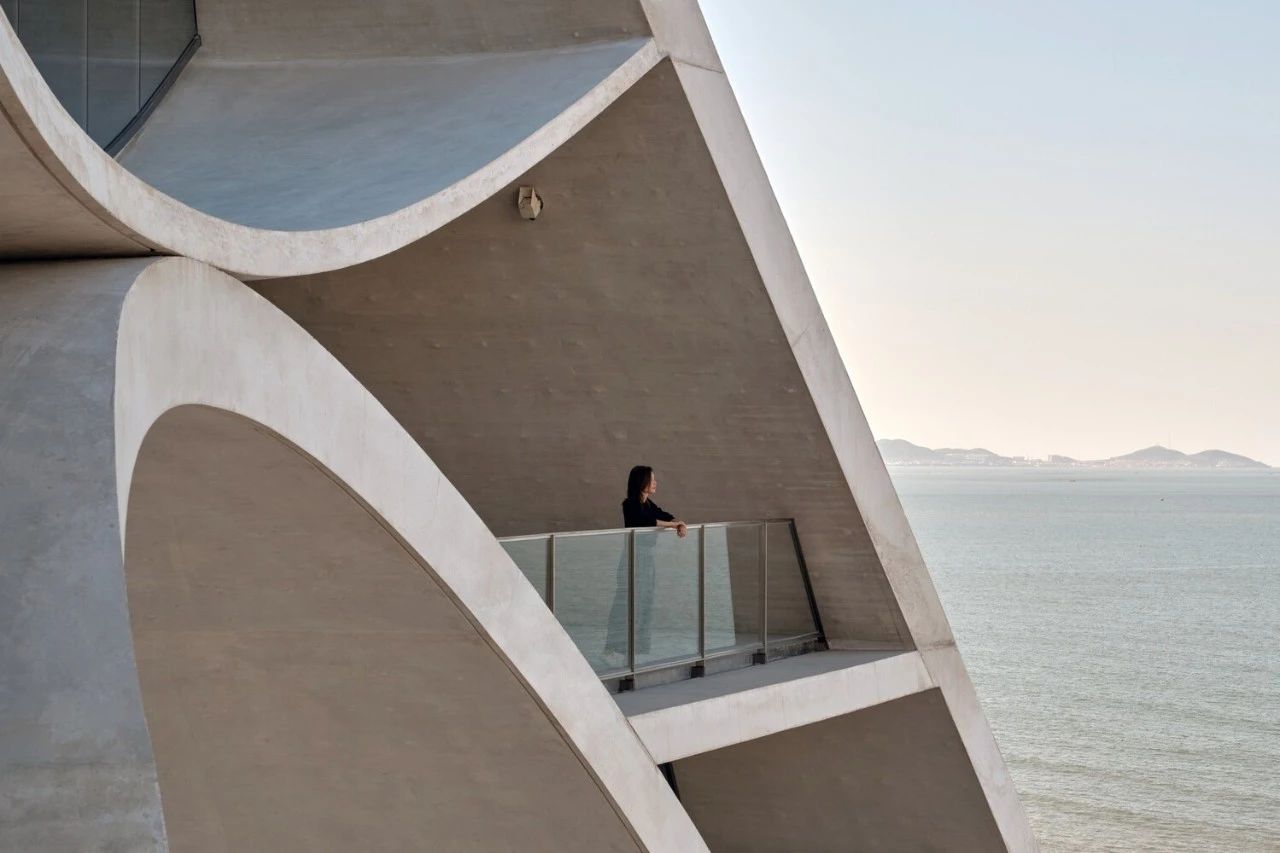
©lwan Baan
Trekroner 教堂Trekroner Church
Design: Rarbek og Maller Arkitekter
Address: Roskilde, Denmark
In Roskilde, Denmark, there is a modern building called Trekroner Church that redefines the concept of traditional religious space. One of the most striking features of this church is its organic curves, achieved through an extraordinary effort: over two hundred molds were used on-site to cast nine concrete sections.
This pioneering approach highlights the church's commitment to groundbreaking architectural methods. At Trekroner Church, art and architecture blend together. From the very beginning, architects have worked closely with artists, respecting each other and making architecture and art a whole, forming a symbiotic relationship between art and architecture.

©Adam Mørk
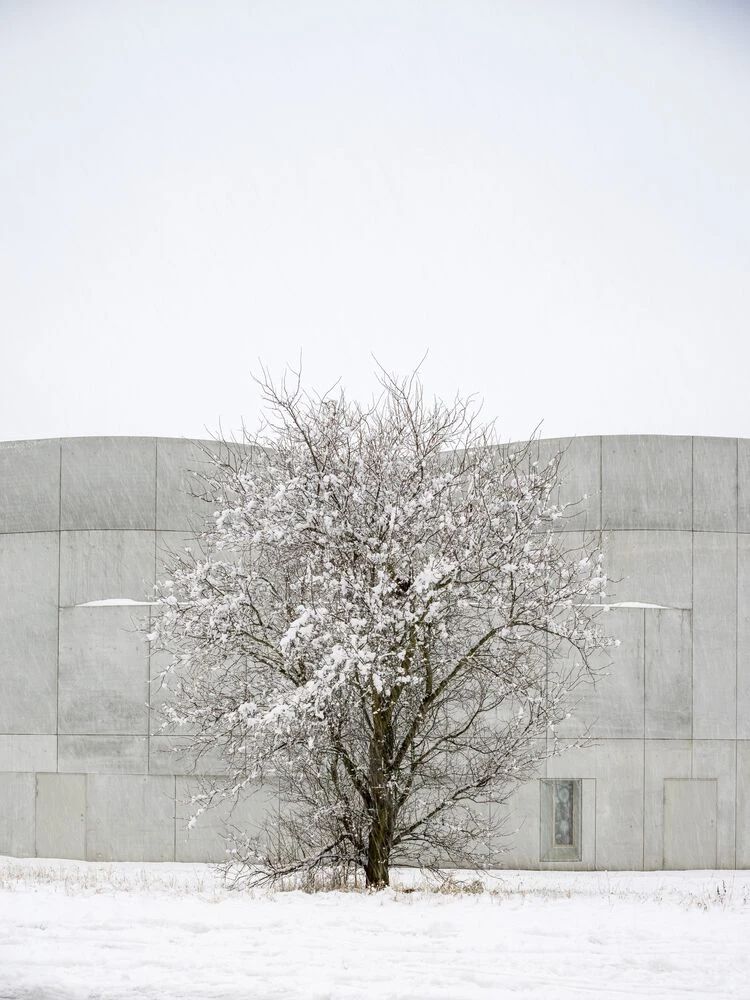
©Adam Mørk

©Adam Mørk
02
Steel
Salmon Eye "LRIS Restaurant
Design: Kvorning Design, Norm Architects
Address: Rosendale, Norway
Located on the magnificent Hardanger Gorge Bay in Norway, "Salmon Eye" not only hosts the LRIS restaurant, but also serves as a spectacular floating aquaculture tourist information center, situated on the outskirts of Rosendale. This approximately 1000 square meter building is an architectural marvel designed by Kvorning Design.
。Its surface is covered with stainless steel scales, imitating the shiny, silver skin of salmon, shining brightly in the fjord. The elliptical design of the building resembles a fisheye, making it a striking landmark that can be clearly seen even from miles away or from the air.
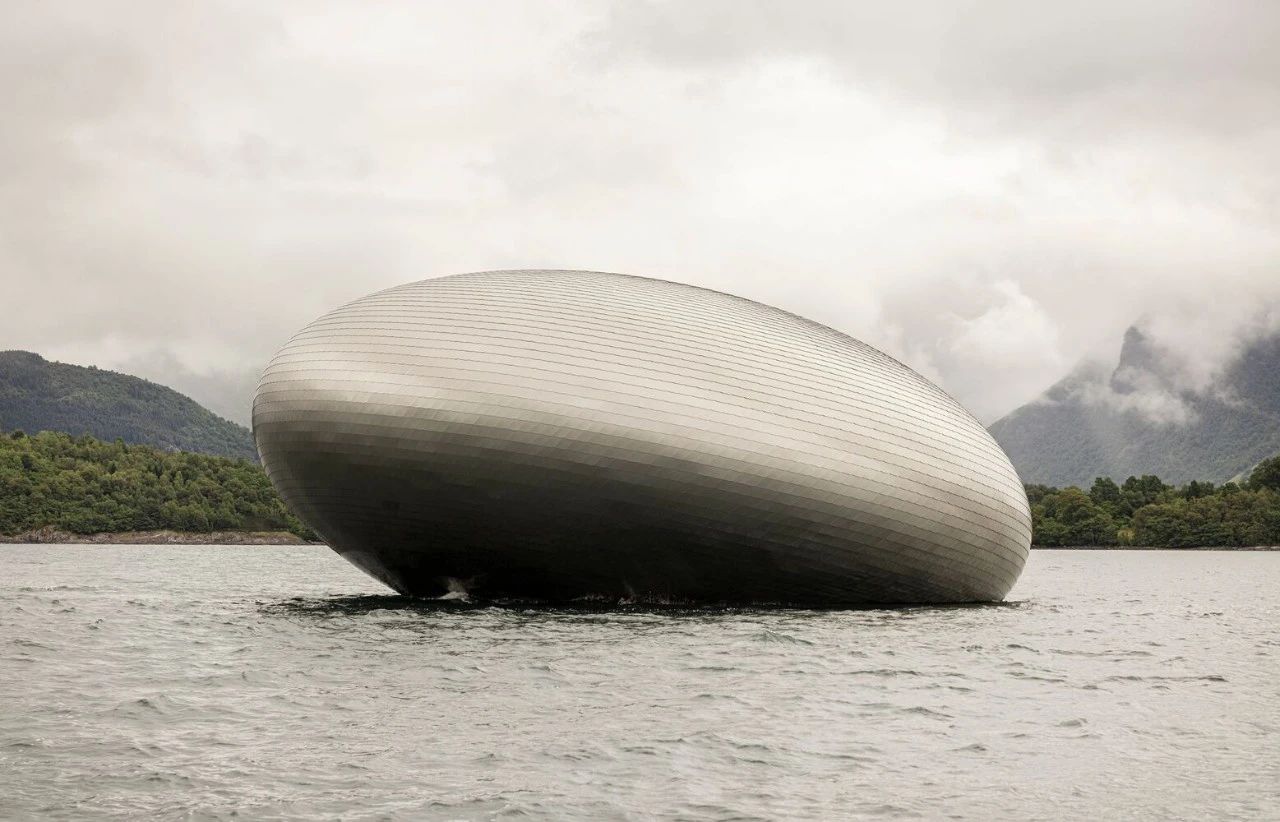
©Jonas Bjerre-Poulsen and Restaurant lris
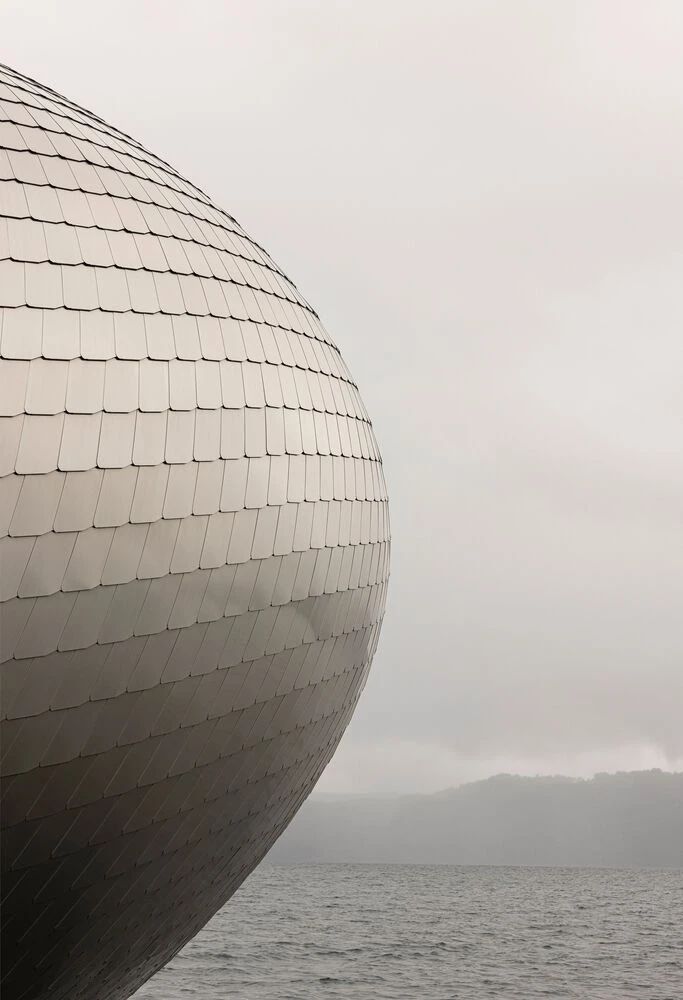
©Jonas Bjerre-Poulsen and Restaurant lris

©Jonas Bjerre-Poulsen and Restaurant lris
Taoxichuan "Cloud Engine"
Design: Walking Architecture
Address: Jingdezhen, China
This is a centralized energy center that provides cold and heat sources, fire pressurized water, and electricity for future expansion of the park, and coordinates energy optimization and fire management of the park. In the design of the "cloud engine", designers hope to authentically showcase the beauty of the equipment, integrate it with the architecture, and present an overall mechanical feel.
The cooling unit, power distribution, boiler room, and fire water pool are buried underground and connected to the green space to form a grassy slope, like tearing open a corner of the grass upwards; The cooling tower control center uses steel structures to float in the air, and the building volume is arranged in a wedge-shaped manner according to the required space size. Although the interior of the building is not open to the public, by dividing the two blocks, the park area occupied by the building is returned to the public, and the total park area is not reduced.
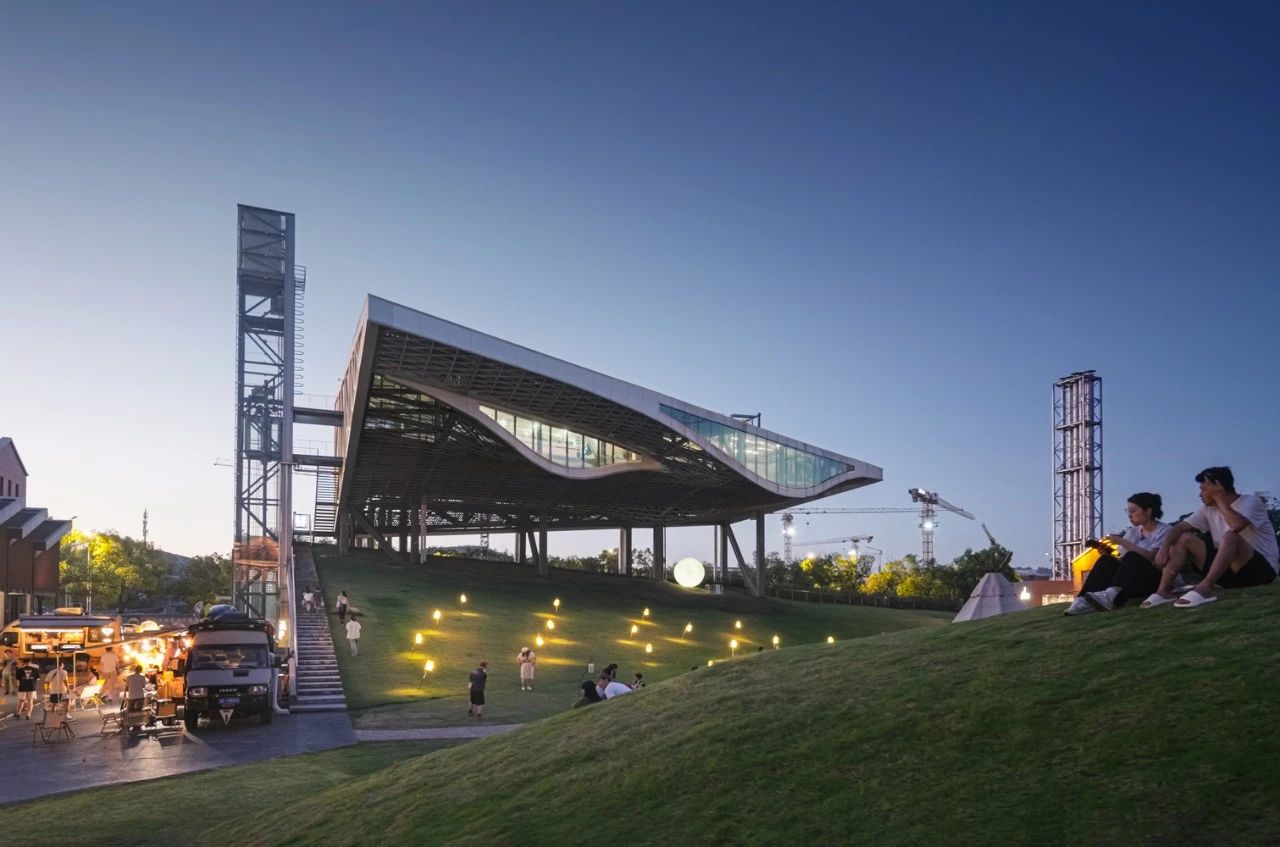
©Architecture Photography
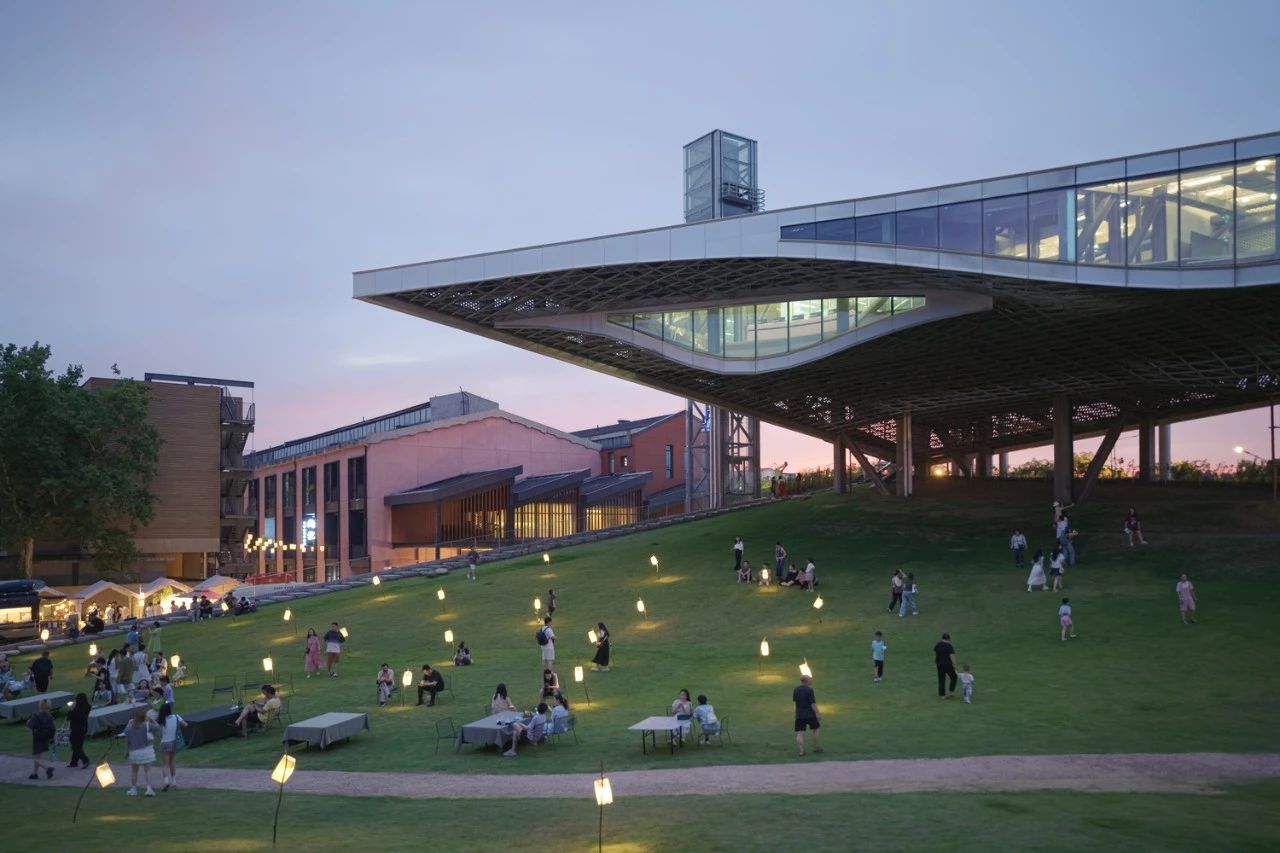
©Architecture Photography

©Architecture Photography
03
Glass
The Greenhouse Garden of Shanghai World Expo Cultural Park
Design: Delugan Meissl Associated Architects
Address: Shanghai, China
The greenhouse garden located in the Shanghai World Expo Cultural Park, designed by DMAA Architectural Firm, was completed in September this year. This large-scale greenhouse project reflects the increasing global emphasis on nature as a crucial part of people's living environment. This latest project combines DMAA's technical and cultural expertise in greenhouse design, proposing a new design approach that prioritizes sustainability at all levels.
Traditional greenhouses have high energy consumption, and architects' designs aim to overcome this drawback by creating zero energy buildings. The project uses single-layer glass based on simulation results. Compared with double-layer glass, single-layer glass has higher transmittance and can better utilize natural light. Therefore, single-layer glass can effectively reduce the loss of heat from the outside to the inside without the need for artificial lighting, thereby reducing the dependence of the greenhouse on artificial lighting during the day. The roof of the project adopts natural ventilation with adjustable openings; Meanwhile, a swimming pool integrated with photovoltaic panels provides cooling and energy for the greenhouse.

© CreatAR lmages

© CreatAR lmages

© CreatAR lmages
Apple Kuala Lumpur TRX Store
Design: Foster + Partners
Address: Kuala Lumpur, Malaysia
Apple The Exchange TRX is Malaysia's first Apple Store, located in the city center of Kuala Lumpur. This 87 foot x 87 foot (26.5 m x 26.5 m) building features a glass curved roof that seamlessly transitions between square and circular geometric shapes from bottom to top.
In order to adapt to Malaysia's tropical climate, it adopts a series of carefully tilted fin shaped roofs to block sunlight and control solar radiation.
In the center of the dome is a glass opening made of 30% ceramic glaze material, which can introduce soft sunlight into the interior and incorporate dynamic lighting functions.
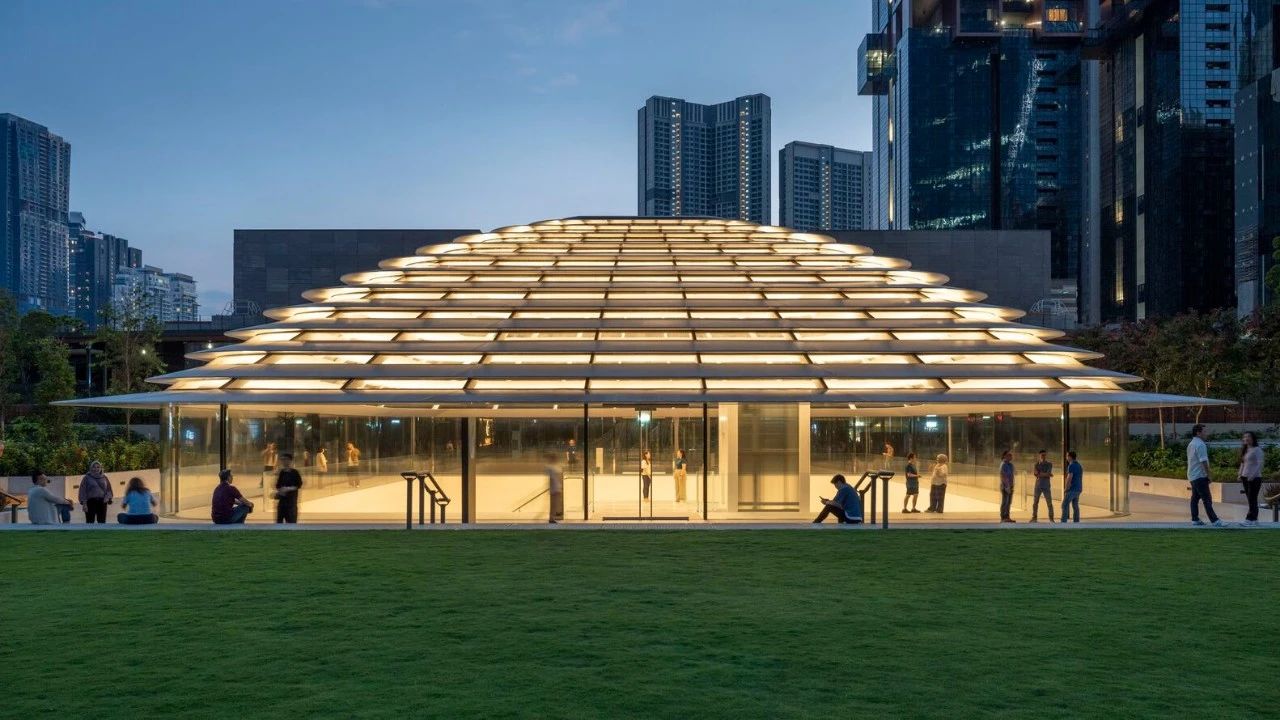
© Nigel Young /Foster + Partners
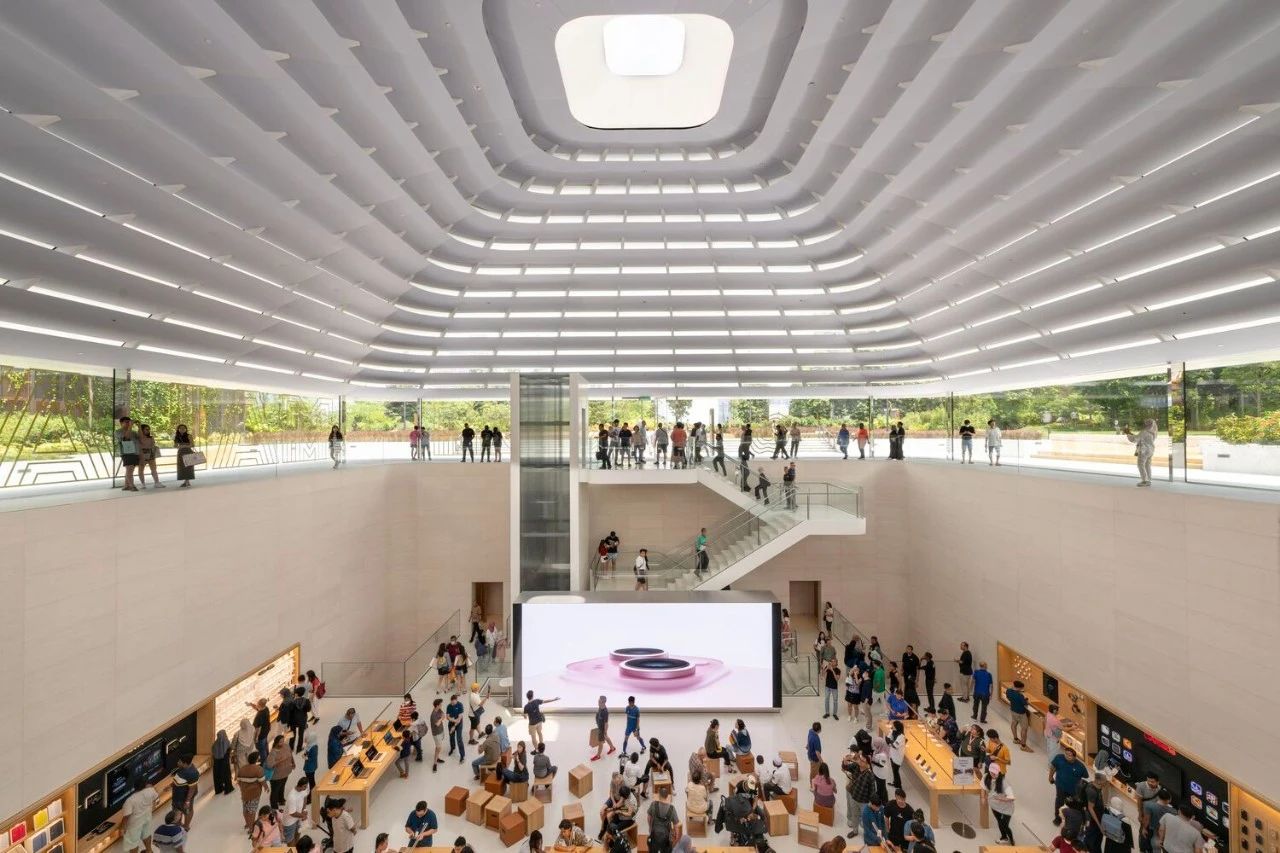
© Nigel Young /Foster + Partners
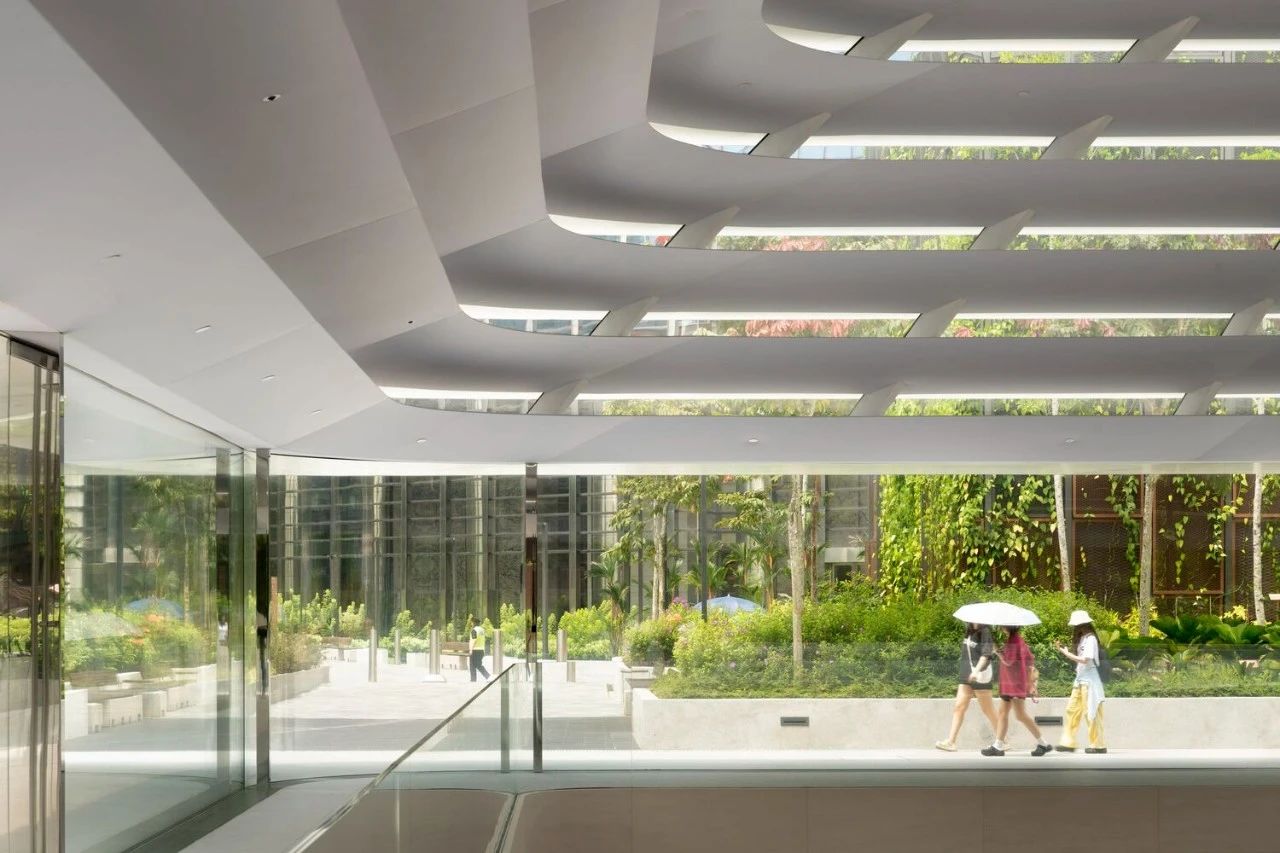
© Nigel Young /Foster + Partners
04
Aluminum plate
Beijing Zhongguancun International Innovation Center
Design: MAD Architecture Firm
Address: Beijing, China
The Zhongguancun International Innovation Center (formerly known as the "Zhongguancun Forum Permanent Venue") designed by MAD Architecture Firm in Beijing has been completed and put into use. The form of the building slowly stretches from north to south on the earth. From the distant Three Mountains towards the site, the building volume is completely hidden in the city, and the green roof blends into the Five Gardens and Three Mountains environment in a subtle and humble manner, becoming its green extension in the city and a rare landscape in the city.
2769 pieces of air carbon sprayed hyperbolic honeycomb aluminum plates with different shapes and curvatures are arranged on the irregular steel structure of the roof in a "bottom up" form, forming dense silver white louvers, which are also conducive to hiding the structure and collecting rainwater. At night, the lights hidden in the gaps between the roof louvers stretch out in sync with the roof lines, creating a harmonious balance between movement and stillness. They not only echo the continuous flow of traffic on the city's main roads, but also add vitality and energy to the city.

©Existence of buildings
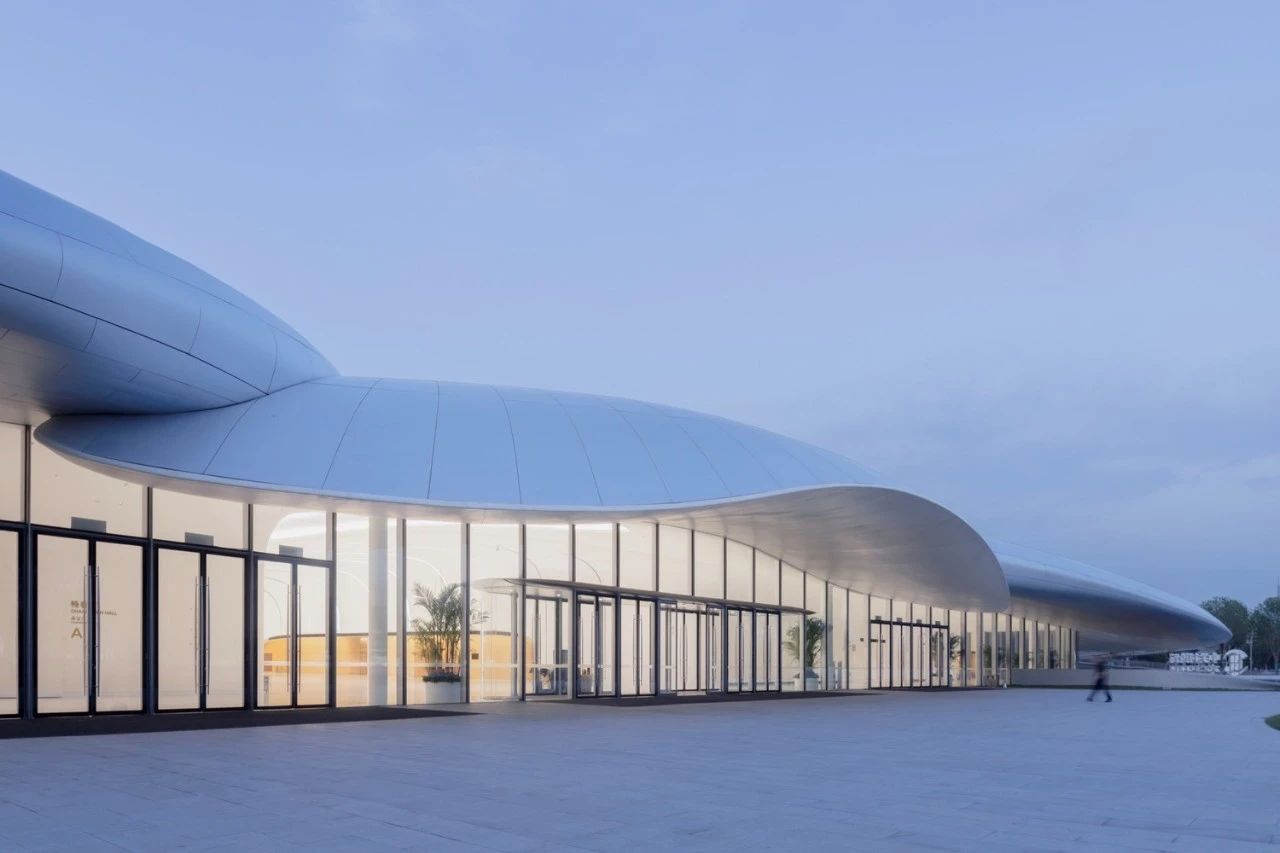
©Existence of buildings
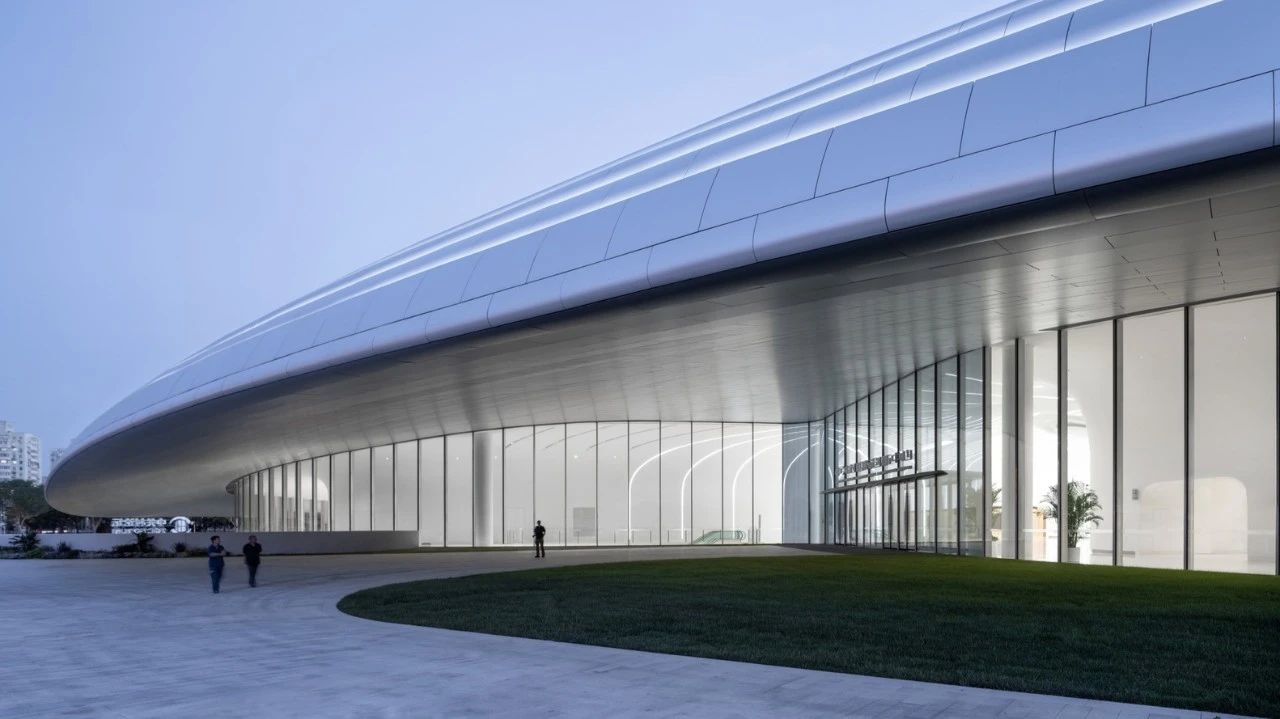
© CreatAR lmages
The King's Gallery at the Egyptian Museum
Design: OMA + Andrea Tabocchini Architecture
Address: Turin, Italy
The new plan designed by OMA for the King's Gallery aims to reconnect ancient Egyptian statues with their original background in Thebes, rather than simply displaying them as exhibits. The new gallery experience is defined by the contrast and transition of space from dark to light - a concept that historically symbolizes the creative process of ancient Egypt and is often associated with kings and gods.
Compared to Dante Ferrett's black box space design, OMA's new solution presents this primitive building that can be traced back to the 17th century to the public, with statues bathed in sunlight just like they were in the pristine environment of Kanak. The subtle reflective aluminum wall displays historical information about the statue, while adding an ethereal atmosphere to the gallery space. Light pours down from the skylight, guiding tourists' gaze towards the open space above, evoking the grandeur of Baroque architecture.
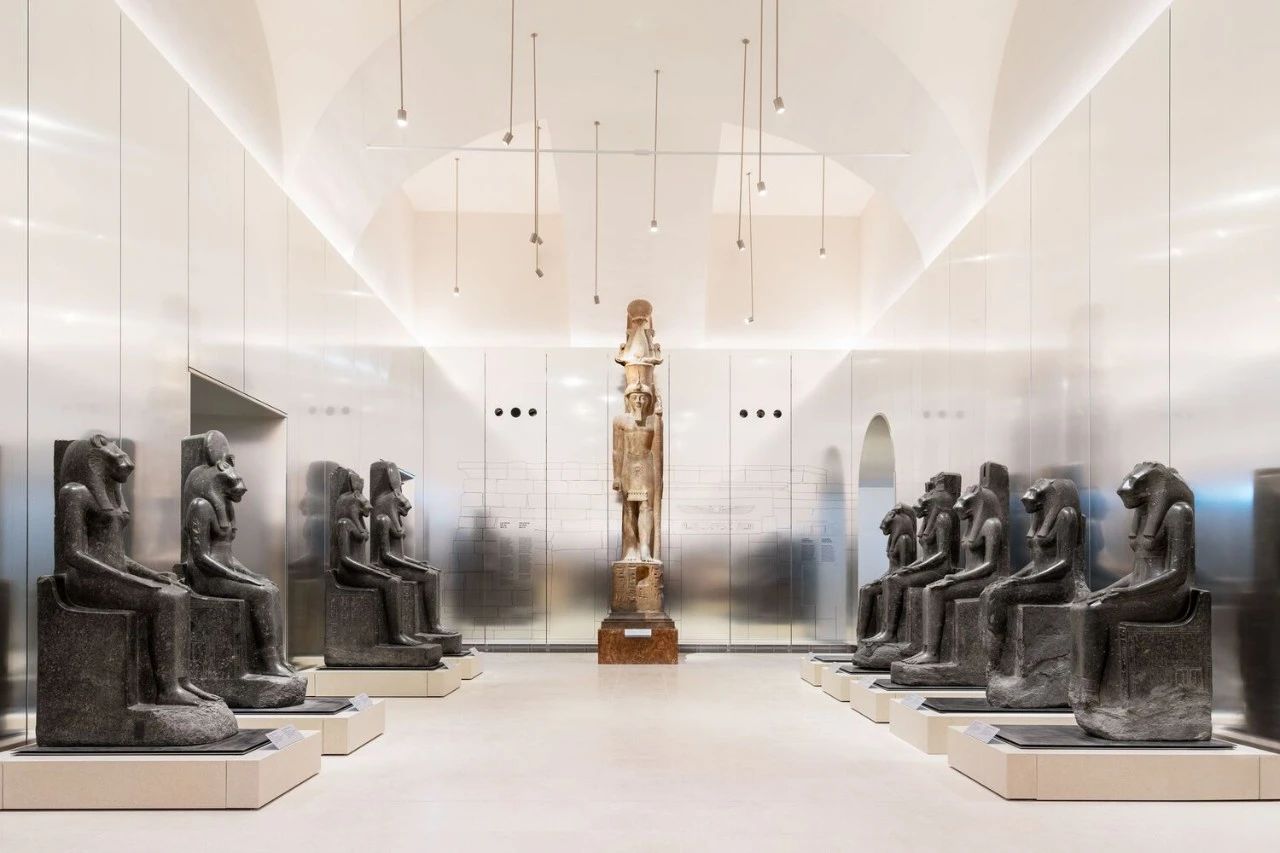
© Marco Cappelletti
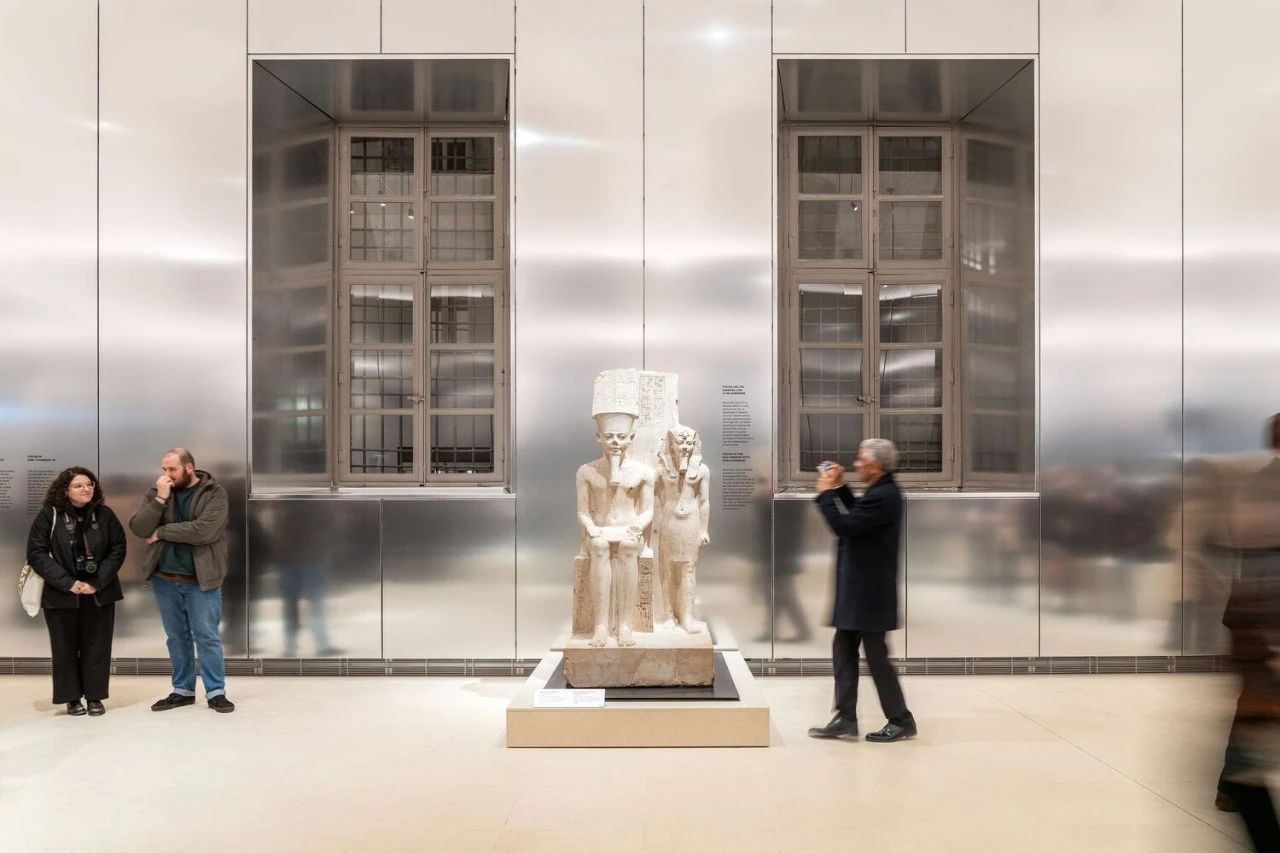
© Marco Cappelletti
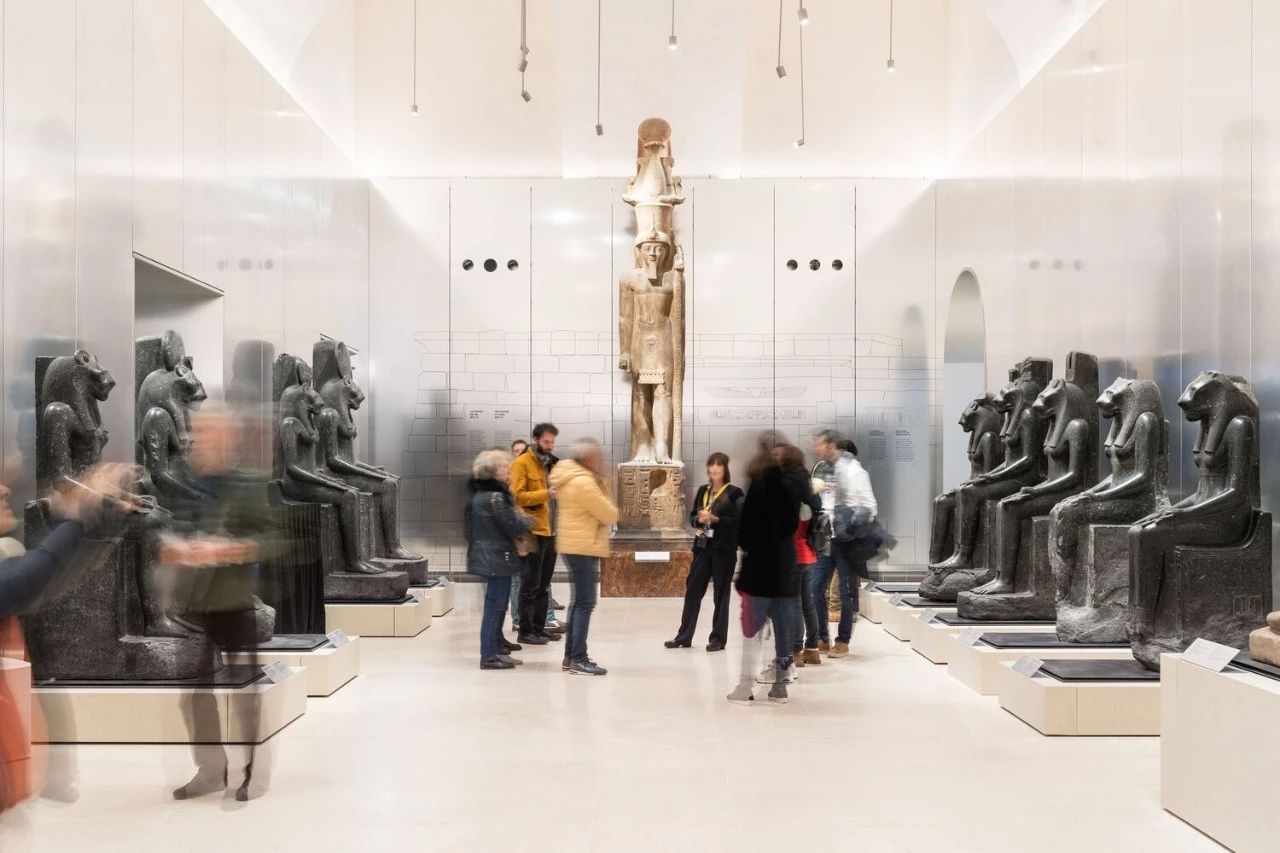
© Marco Cappelletti
05
Wood
Kibi Kogen N Square
Design: Kengo Kuma Architecture Urban Design Firm
Address: Okayama, Japan
Kibi Kogen N Square is located in Jibei cho, on the central plateau of Okayama Prefecture. It is a regional exchange and creative facility centered around shared offices and cafes. The project is led by the local company Systems Nakashima for development.
Okayama is the largest CLT panel production site in Japan, and the entire structure and interior of the project use CLT panels. These CLT panels are 2.2 meters wide, 35 meters long, and 21 centimeters thick, stacked at different angles on the site with a height difference of about 4 meters. The misalignment of panel angles creates various spaces and openings. This open space is different from the closed and repetitive structure of traditional CLT, reflecting the openness of facilities and the spirit of cooperation within the community, including Okayama University's participation in shared office spaces. Through these spaces, we look forward to the intersection and integration of intergenerational and industry academia boundaries.

©Kawasumi-Kobayashi Kenji Photograph Office
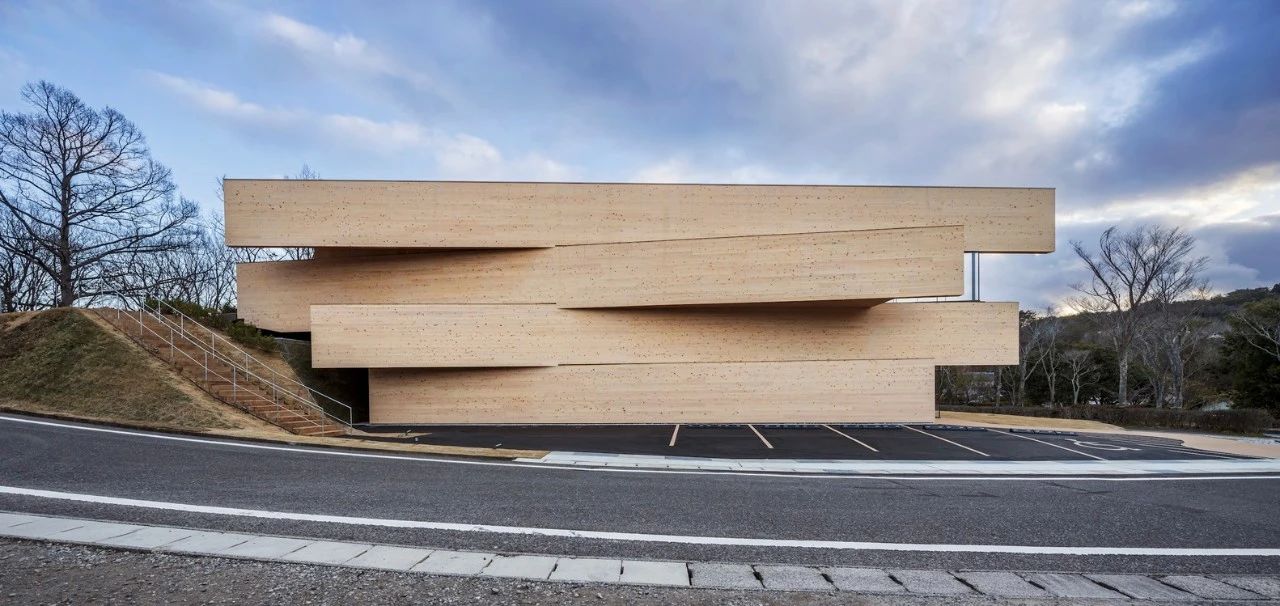
©Kawasumi-Kobayashi Kenji Photograph Office
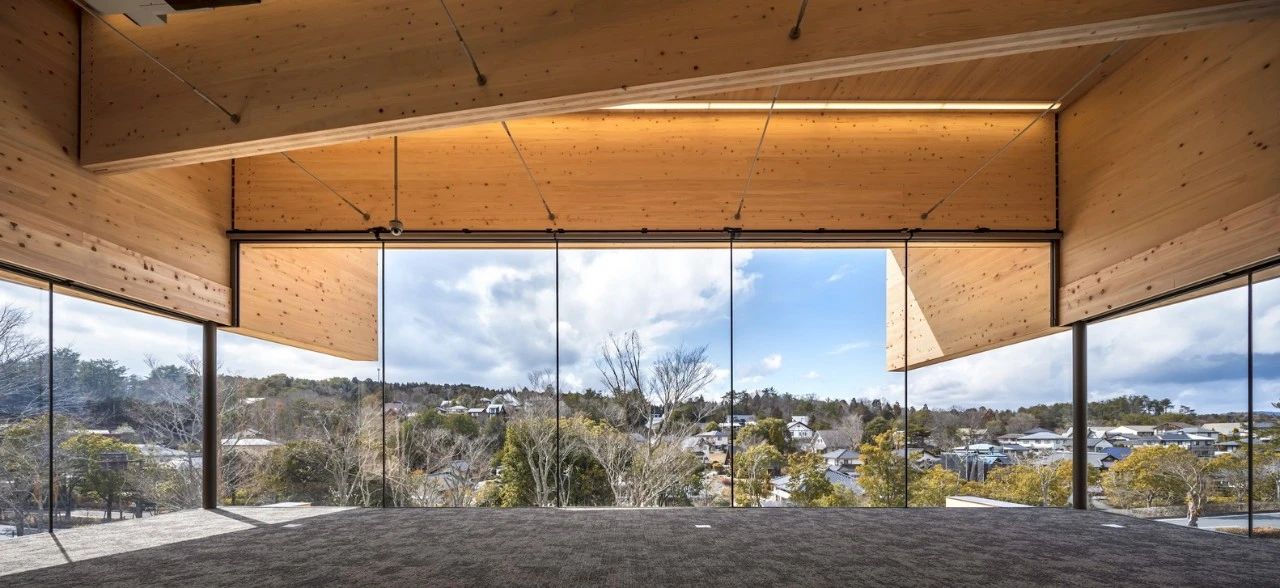
©Kawasumi-Kobayashi Kenji Photograph Office
National Nanotechnology in the Greater Bay Area
Innovation Research Institute Guangna Institute Exhibition Center
Design: Chizao Design
Address: Guangzhou, China
The exhibition center building is a semi spherical wooden structure with a diameter of approximately 39m and a height of 21m. It is composed of two independent systems: a spherical shell glued laminated timber structure and a main steel structure. The spherical grid shell laminated wood structure originated from the prototype of the "redwood tree" concept, rising from the center of the site and scattering downwards when approaching the top of the glass curtain wall, thus forming a geometric shape similar to an "apple core" as a whole.
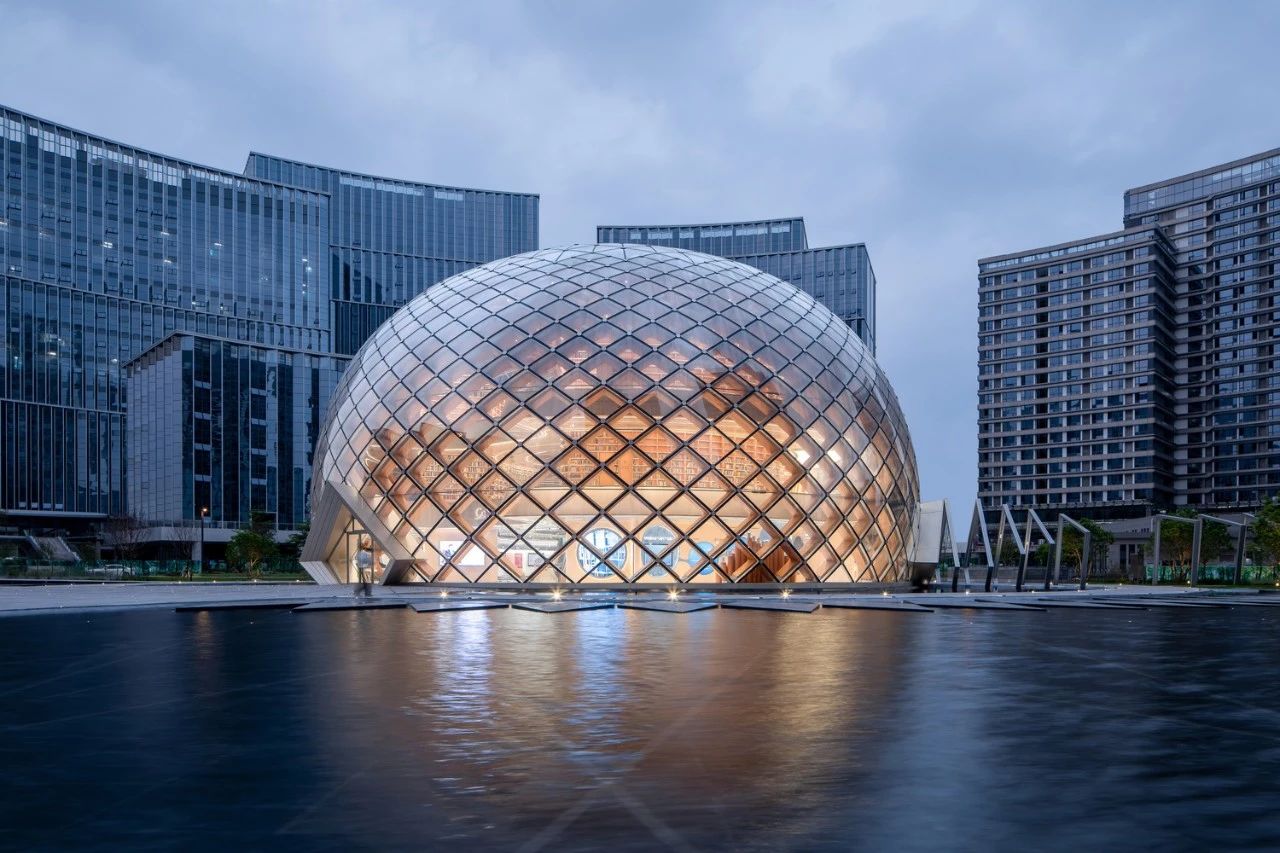 ©Liu Junnan
©Liu Junnan

©Suzhou Kunlun Green Building Wood Structure Technology Co., Ltd

©Liu Junnan
06
Brick
W-Misson Headquarters Building
Design:BCHO Partners,Behet Bondzio Lin Architekten
Address: Chengdong District, South Korea
In this case, the traditional brick masonry system has a great ability to depict and adapt to the required curves. In Seoul, brick buildings have a long historical tradition. In this case, the solution adopted is a truly "curtain wall" system, where bricks are attached to a concrete wall poured on site, which serves as a guide for constructing the curve.
With the help of digital computing tools, designers can design a fairly simple algorithm to create the expected wave effect that extends upwards into the sky. In a 520 story brick high building, a new brick is added every 24 floors to achieve the required curve growth. The amplitude of the waves starts from the starting position 0 on the third floor and reaches 170 centimeters at the roof line.
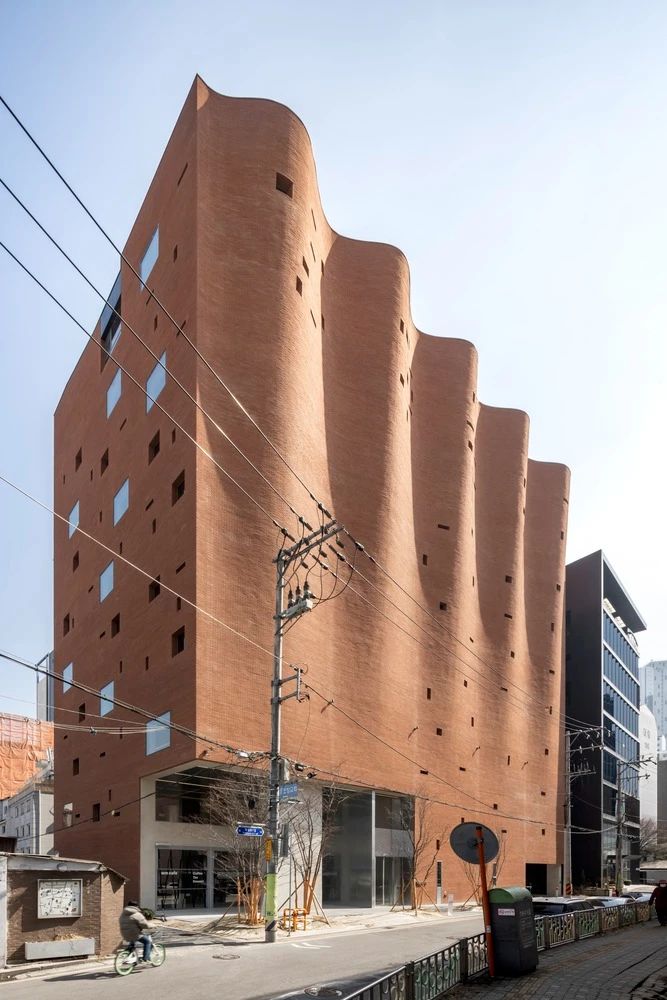
©YuChen Chao Photography
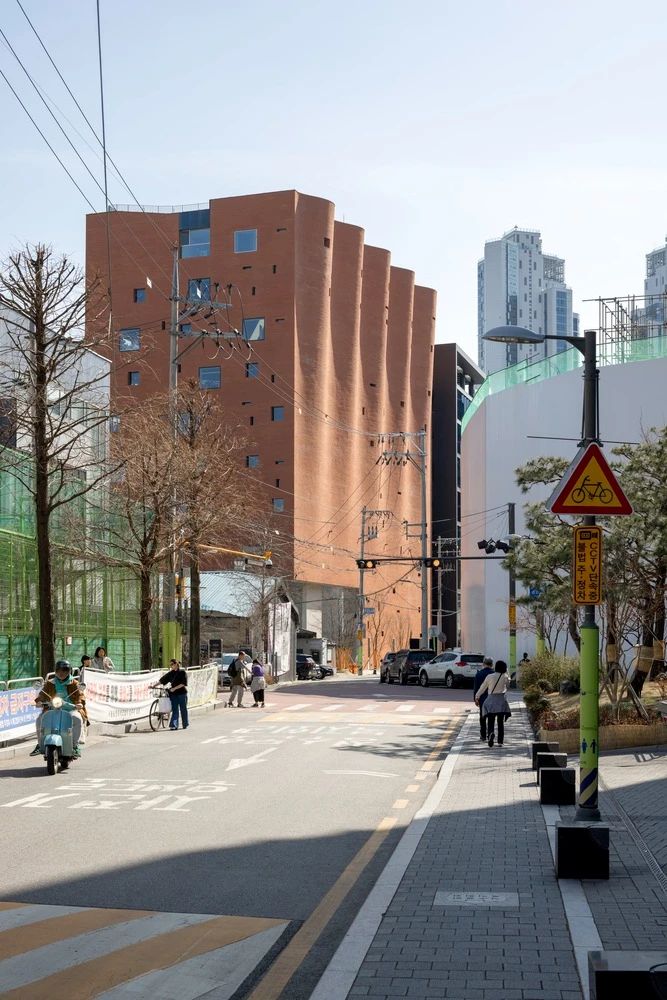
©YuChen Chao Photography
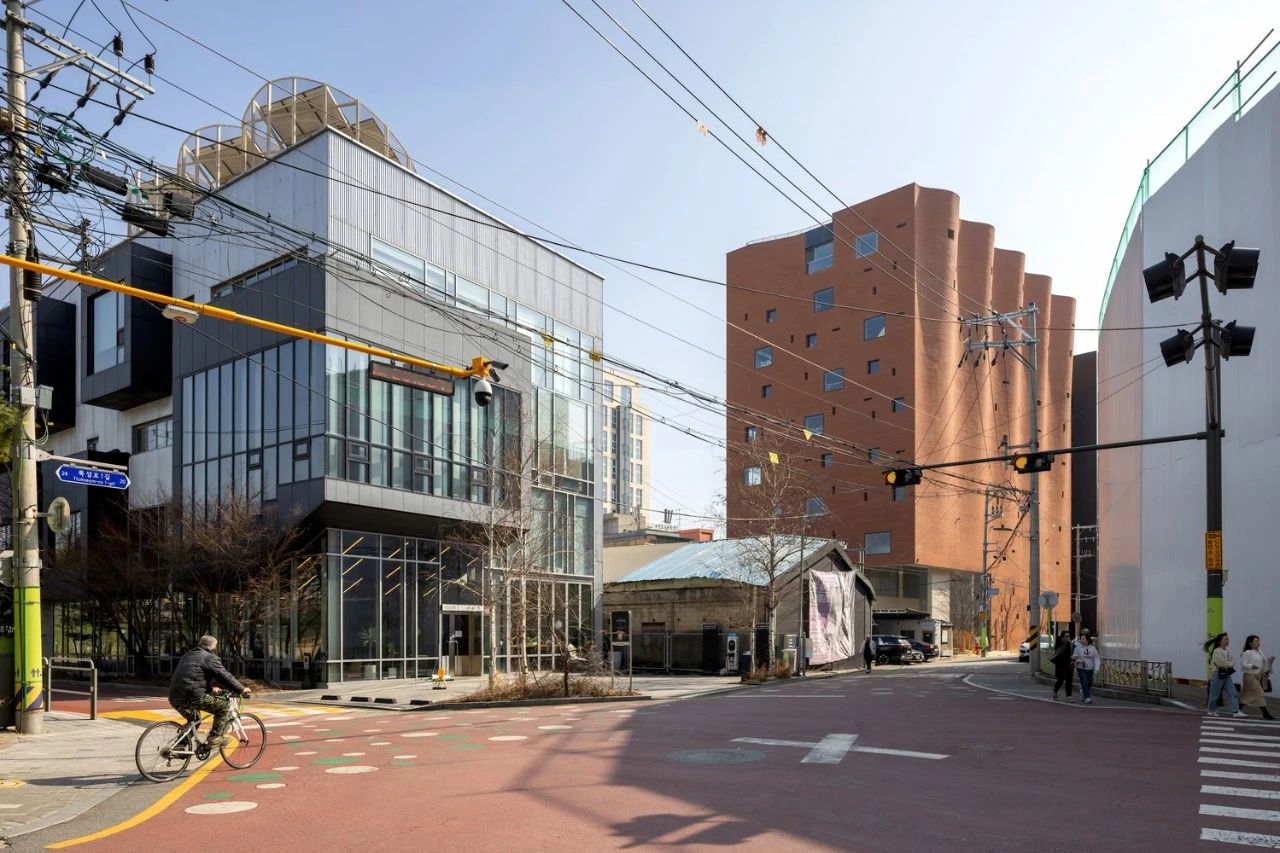
©YuChen Chao Photography
Hosens Institute of Technology Residential
Design: Cubo Arkitekter、 DAN@ Arkitektur
Address: Horsens, Denmark
This project aims to become a vivid and inspiring treasure trove of exemplary solutions in handicrafts, architecture, and materials. It is the first such college in Denmark. In terms of architectural design and material selection.
H á ndv æ rkskollegiet presents a warm and enticing appearance both from afar and up close. It is a sturdy and durable architectural complex that will elegantly age over time. The building adopts carefully selected, rustic, natural, and often traditional building materials such as red bricks and wood, which are chosen for their architectural characteristics and beautiful textures, ensuring the durability of the building and a charming, warm, and dignified aging process.

© Hyeonki Yoon

© Hyeonki Yoon

© Hyeonki Yoon
07
Perforated metal plate
Bonfiglioli Headquarters Building
Design: Peter Pichler Architecture
Address: Bologna, Italy
Peter Pichler Architecture unveiled the recently completed Bonfiglioli headquarters located in Bologna, Italy. The design of the new headquarters was inspired by the need to build an efficient and practical office building, reflecting the professionalism, innovation, and home history of this Italian company.
The new headquarters is designed as a near zero energy building (NZEB) and features ground source heat pumps and radiant ceilings to further save energy and improve internal comfort. The south facing exterior wall and roof of the headquarters building use customized continuous pleated aluminum mesh as the second layer exterior wall, which can filter strong light, ensure a comfortable indoor environment, and save energy.

©Gustav Willeit

©Gustav Willeit
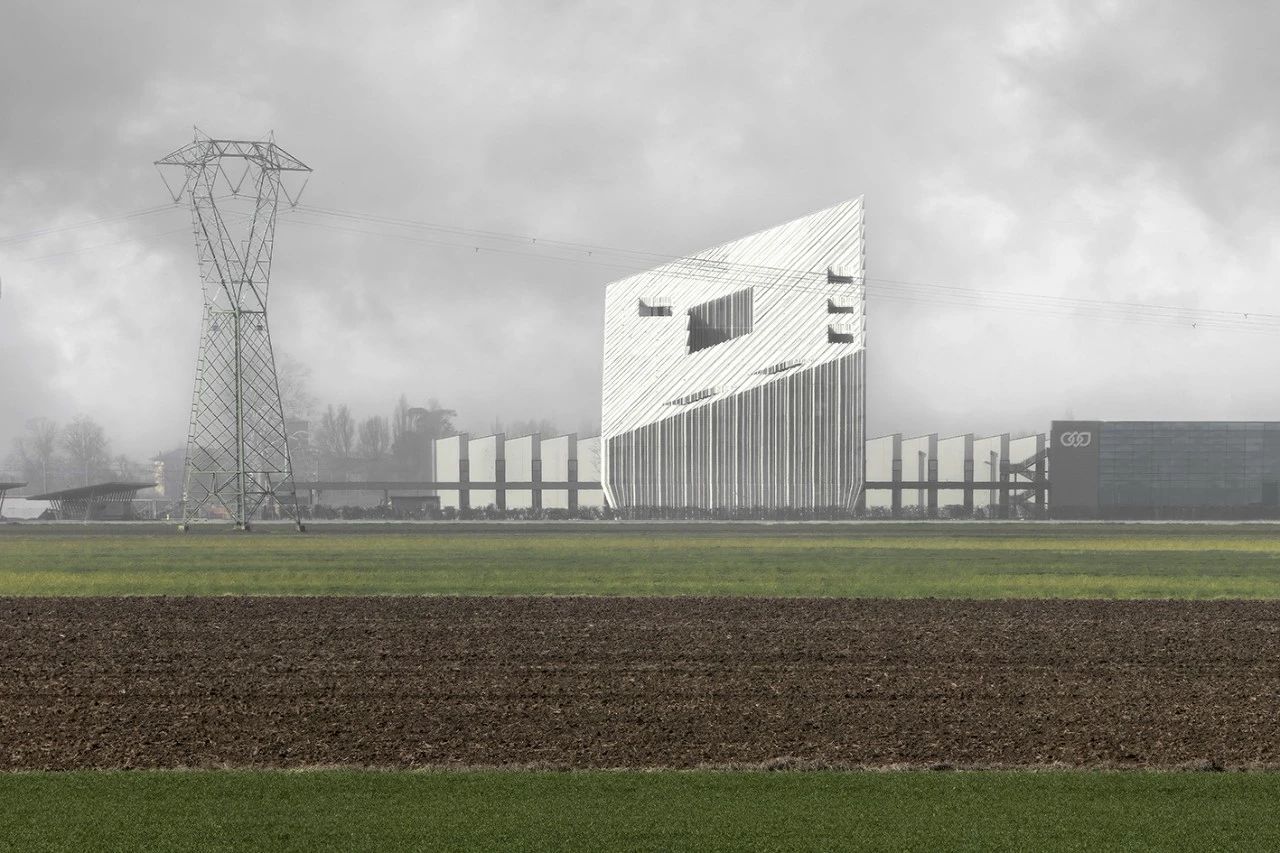
©Gustav Willeit
Breeze Hall
Design: Designed by
Address: Shanghai, China
The Breeze Hall is located in the most important commemorative park in Shanghai - Lu Xun Park. Its predecessor was a mixed forest on the south side of the Lu Xun Memorial Hall, which was fenced off as a corner of the park and became a fragment of urban development, forgotten by people.
Design needs to solve two problems - how to achieve high-quality construction in the face of limited cost budget and construction period; The main building is composed of wing steel roof trusses and landscape bases, with the roof trusses resting on floating foundations. The slender steel frame array is lightweight and transparent, balancing steel usage and structural efficiency. A 100 * 150mm I-beam column supports an open space of 42m in length, 15m in span, and 12m in height. The roof is made of prefabricated perforated panels, and the unit assembly is quickly constructed to provide multi-scale vision, simple yet detailed. Double layered perforated plates can serve as filters for both internal and external spaces.
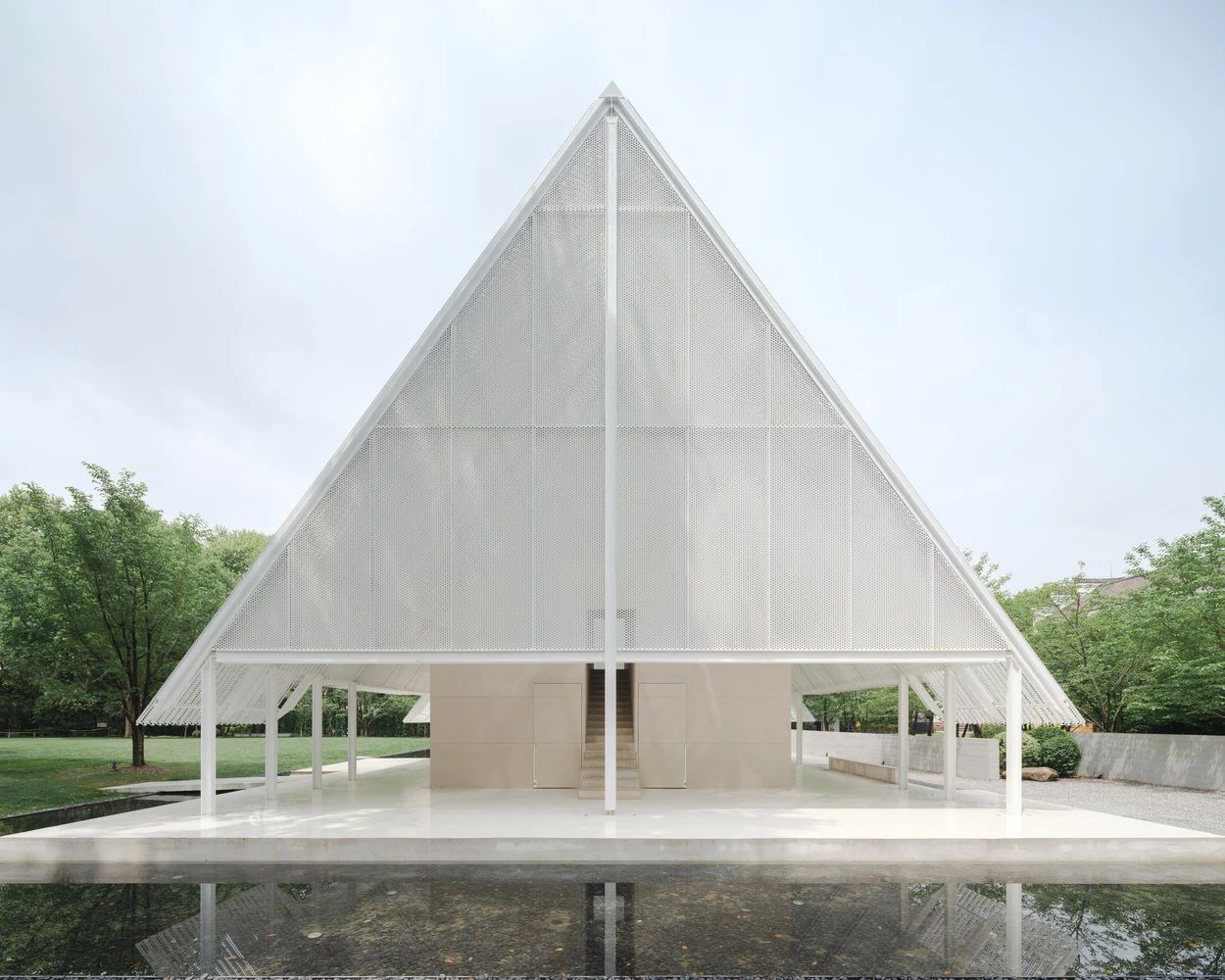
©Zhu Runzi
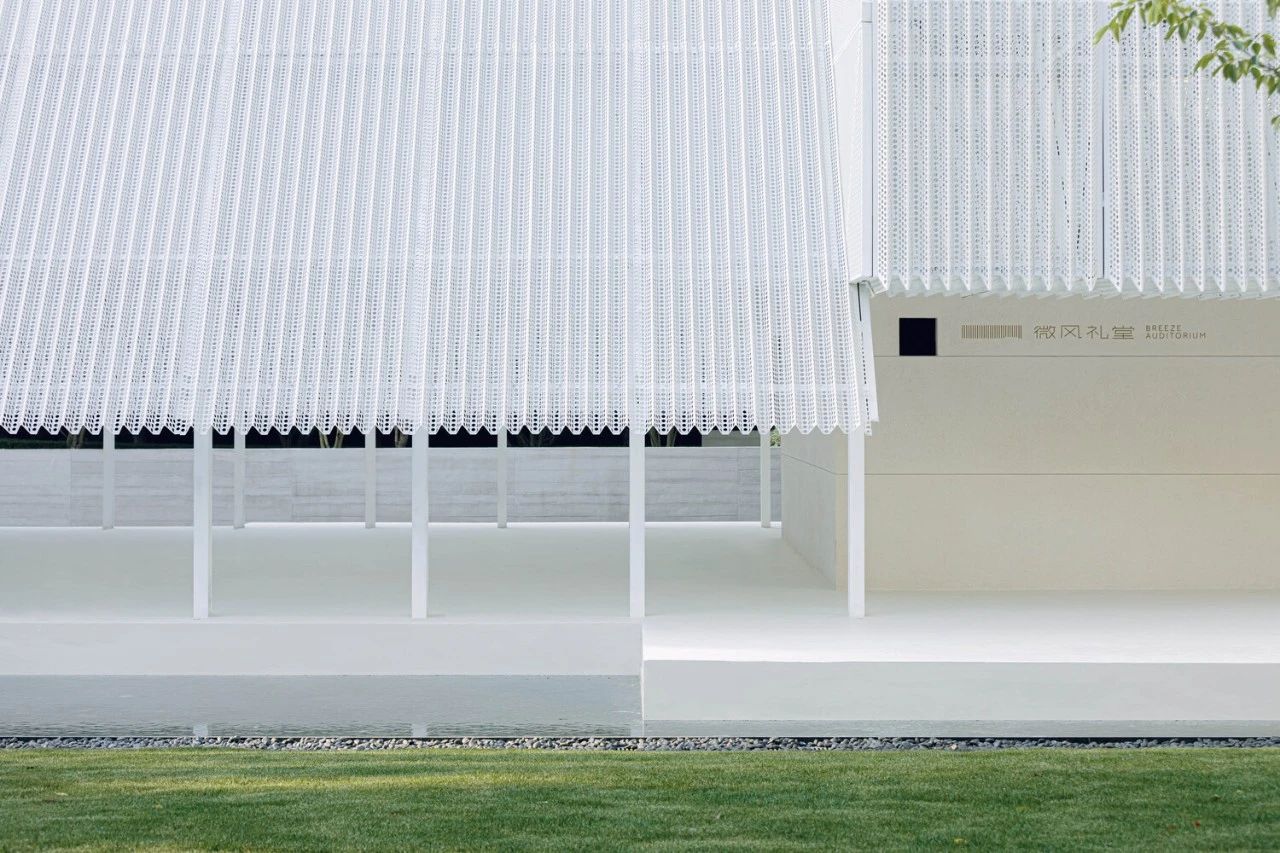
©Zhu Runzi
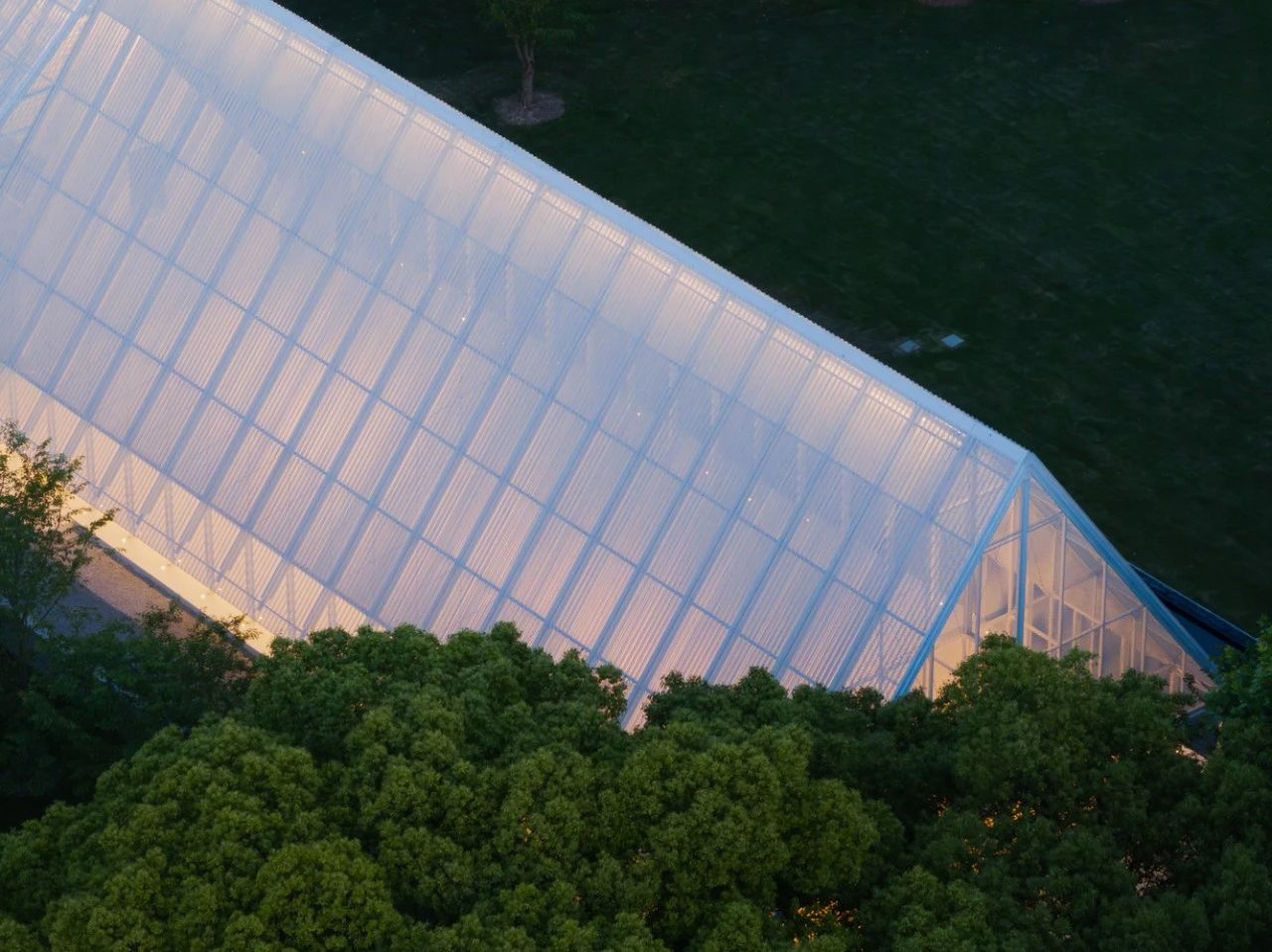
©Lv Xiaobin
08
Natural soil and rock
Dirie Future Art Center
Design: Schiattarella Associati
Address: Diriya, Saudi Arabia
This contemporary building is located on the edge of the desert north of Riyadh, adjacent to the UNESCO World Heritage Site of Turaif Ancient City. It is the ancient capital of the Najd Desert region and one of the most important historical and archaeological sites in the Arabian Peninsula.
The architecture of the Dirie Future Art Center has achieved zero abandonment, which is a contemporary project that addresses the challenge of creating new humanistic dimensions on land with historical heritage. The local architectural tradition, known as desert architecture, is based on the direct use of building materials within the site: stone, clay, and plaster. The result is a strong material continuity between soil and structure. The space between the building volumes evokes the narrow streets and small squares of ancient settlements.
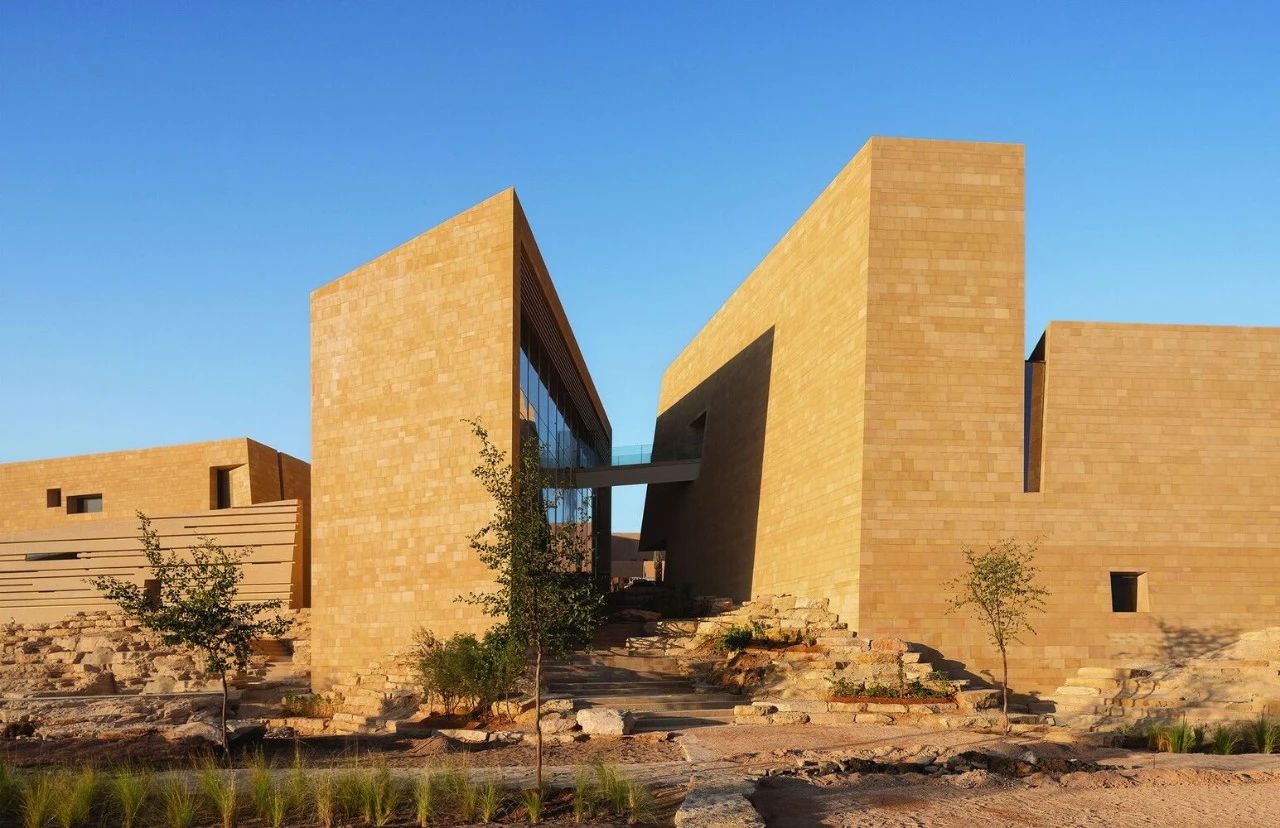
© Mohamed Somji
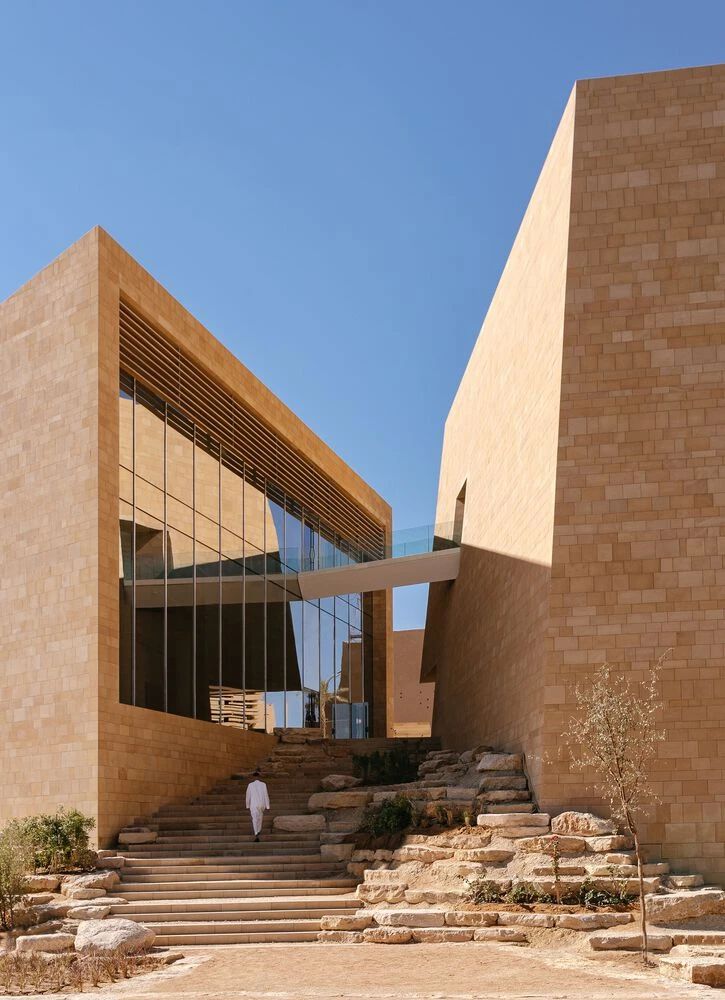
© Hassan Al Shatti
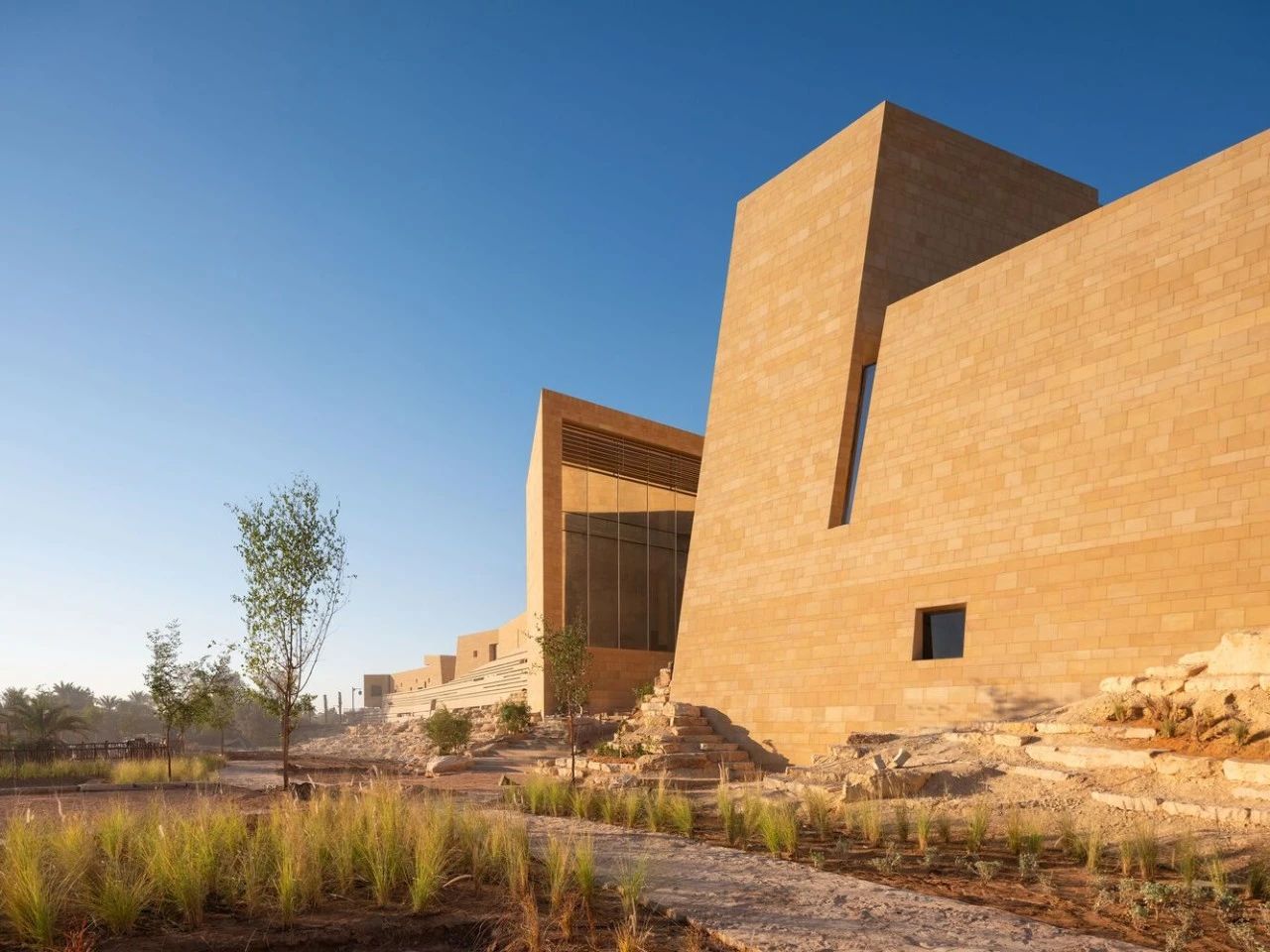
© Mohamed Somji
Vipp Todos Santos Resort Villa
Design: PPAA
Address: Santos, Mexico
The latest resort house of the Denmark brand Vipp, Vipp Todos Santos Guesthouse, is designed entirely on the basis of its desert location and unique topography, and is perfectly integrated with its surrounding environment.
This five bedroom property includes a main house, two adjoining guest rooms, a covered courtyard, a rooftop pool and terrace. Vipp Todos Santos Guesthouse uses on-site natural materials and its rammed earth buildings are very suitable for the local climate, achieving sustainable construction, natural cooling and insulation at night. Solid walls made of compacted soil, which retain their original state, form the interior and exterior walls of the building.
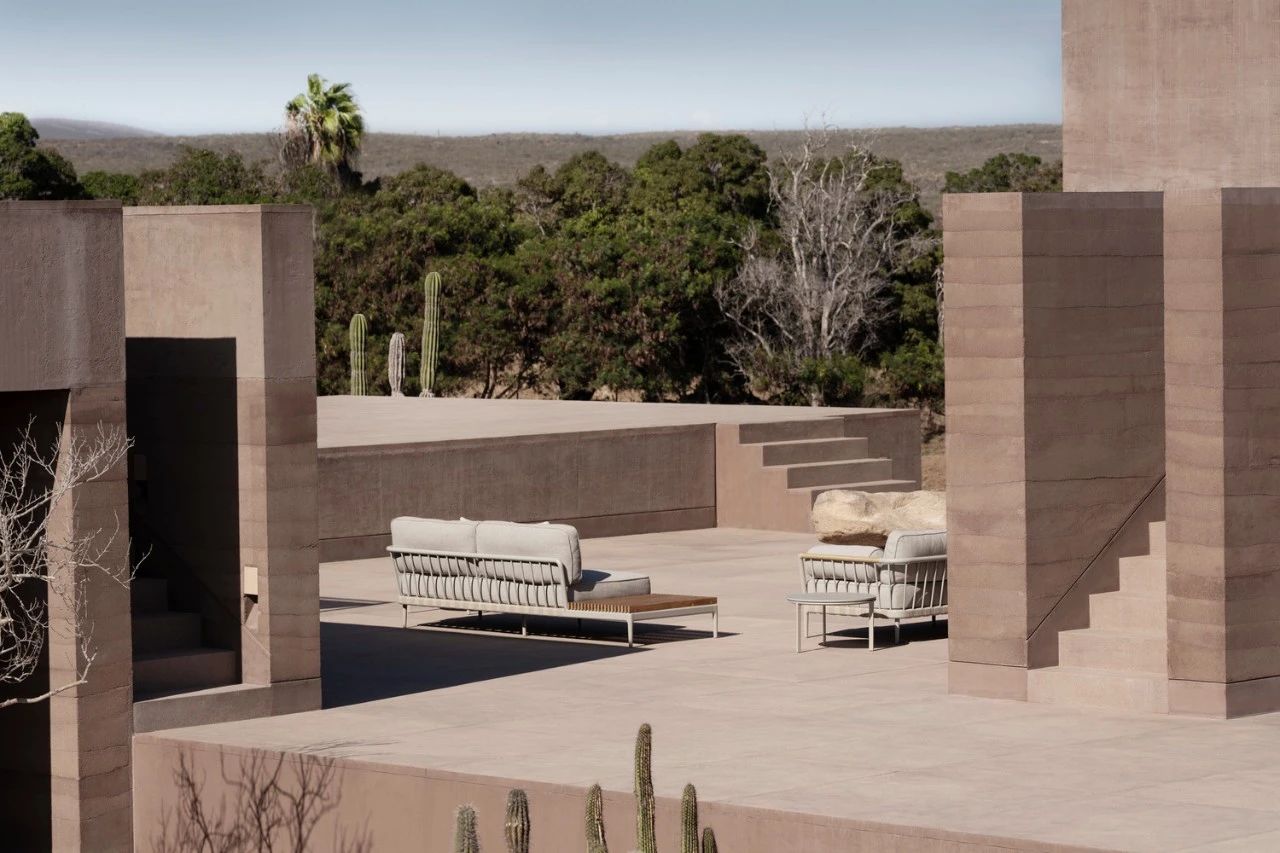
© Anders Hviid
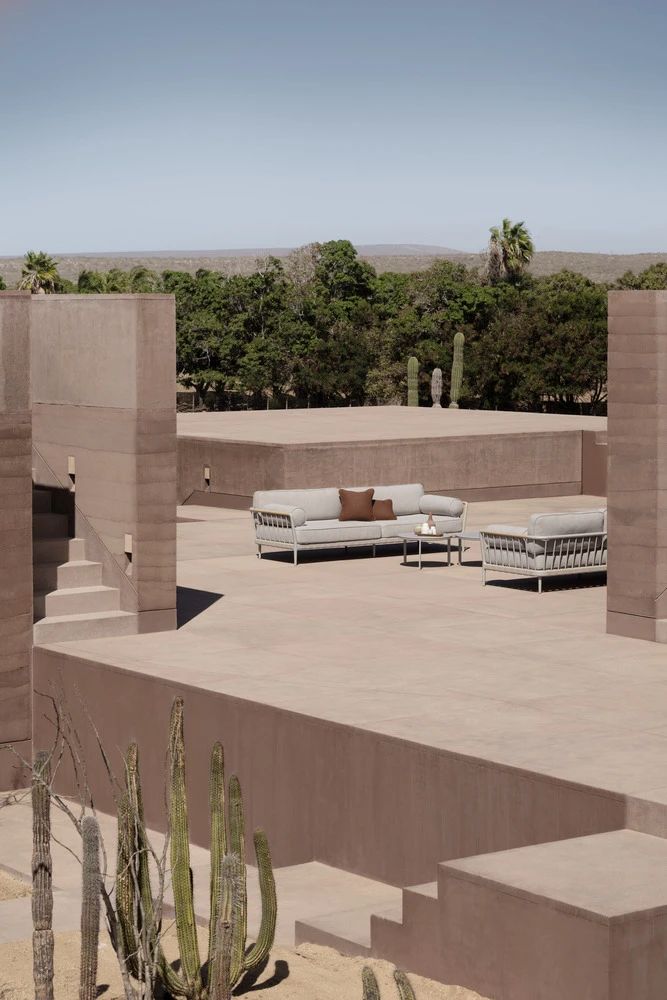
© Anders Hviid

© Anders Hviid
09
Plastic
Hangzhou Terry International Park
Design:milanesipaiusco
Address: Hangzhou, China
The project is Terry's international headquarters park, which is located in Qiantang District (Hangzhou Economic and Technological Development Zone), Hangzhou City, Zhejiang Province, China, and brings together world-class intelligent manufacturing industrial clusters. This unique design not only brings new expressions to industrial buildings, but also makes an ultimate exploration of the aesthetics and functionality of sunshine board materials, endows them with new identity significance, and makes them become the symbolic existence of cities in terms of function and vision.
The factory roof system is composed of Huili polycarbonate sunshine board, aluminum, mg and mn corrugated board and locking plate. The system not only meets the requirements of thermal performance, but also enhances the structural stability of materials, effectively improves the thermal isolation performance, and makes the internal environment more comfortable.
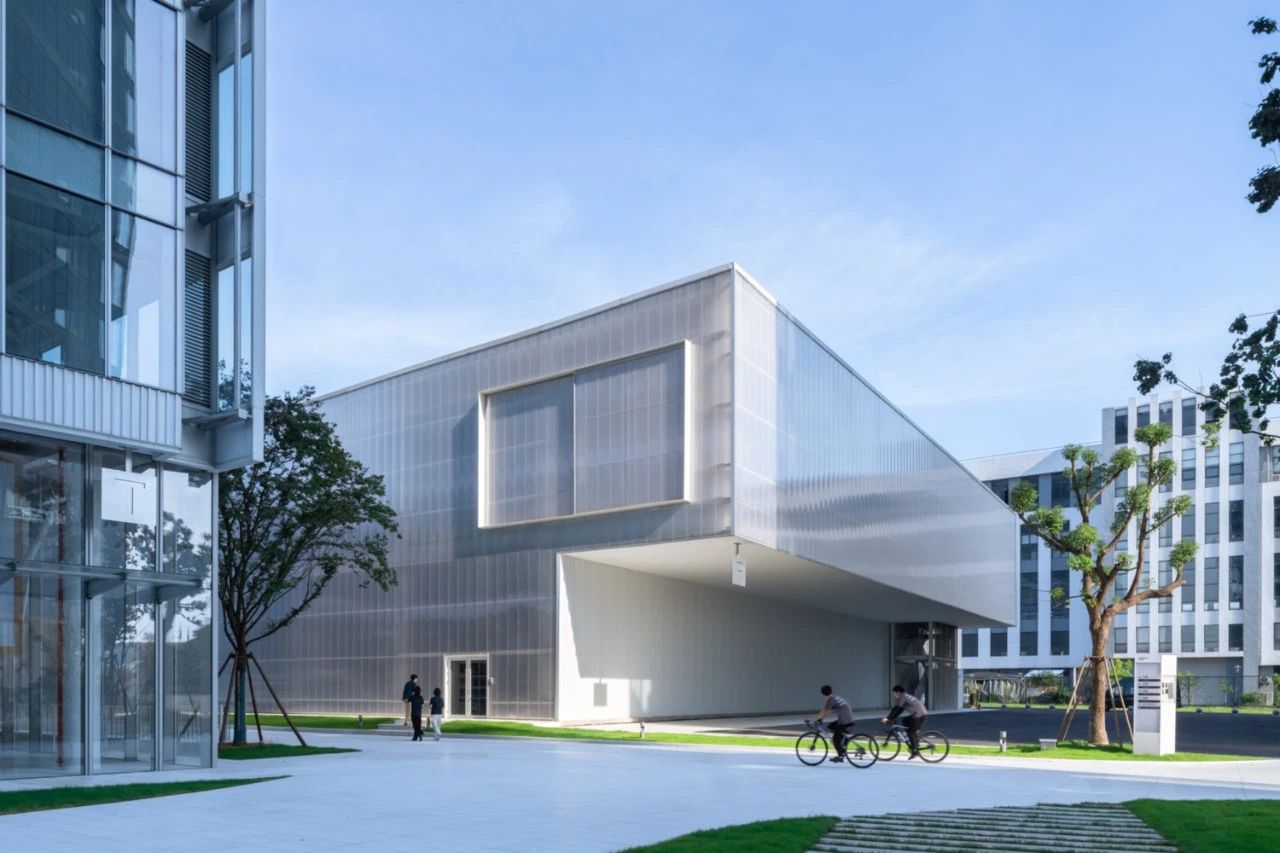
© Archi-Exist
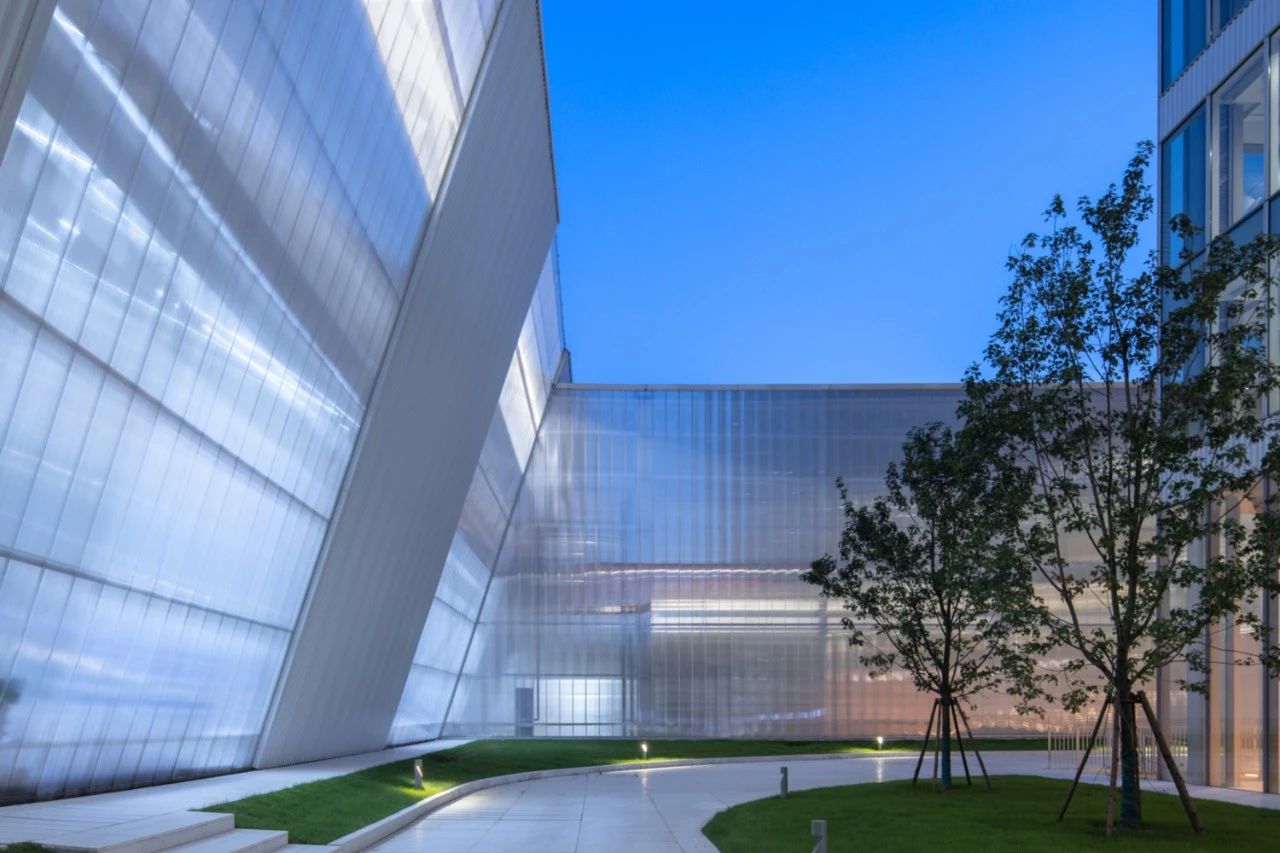
© Archi-Exist

© Archi-Exist
Vught Prison Warehouse Store
Design:Buro NORD Architectuur
Address: Ficht, The Netherlands
This shop is a labour facility within the prison complex. This building occupies a special place in the prison administration system. It is a social environment where prisoners can earn some extra income and gain work experience. This is very important in view of their reintegration into society after serving their sentences.
The focus of the design is to help prisoners build a vision of life outside the walls. By transforming the store into a spacious, bright and comfortable space while incorporating all safety components (invisibly) into the design as carefully as possible. The use of warm and strong materials such as polycarbonate sheets creates a working environment that can withstand certain impacts and has a comfortable appearance.
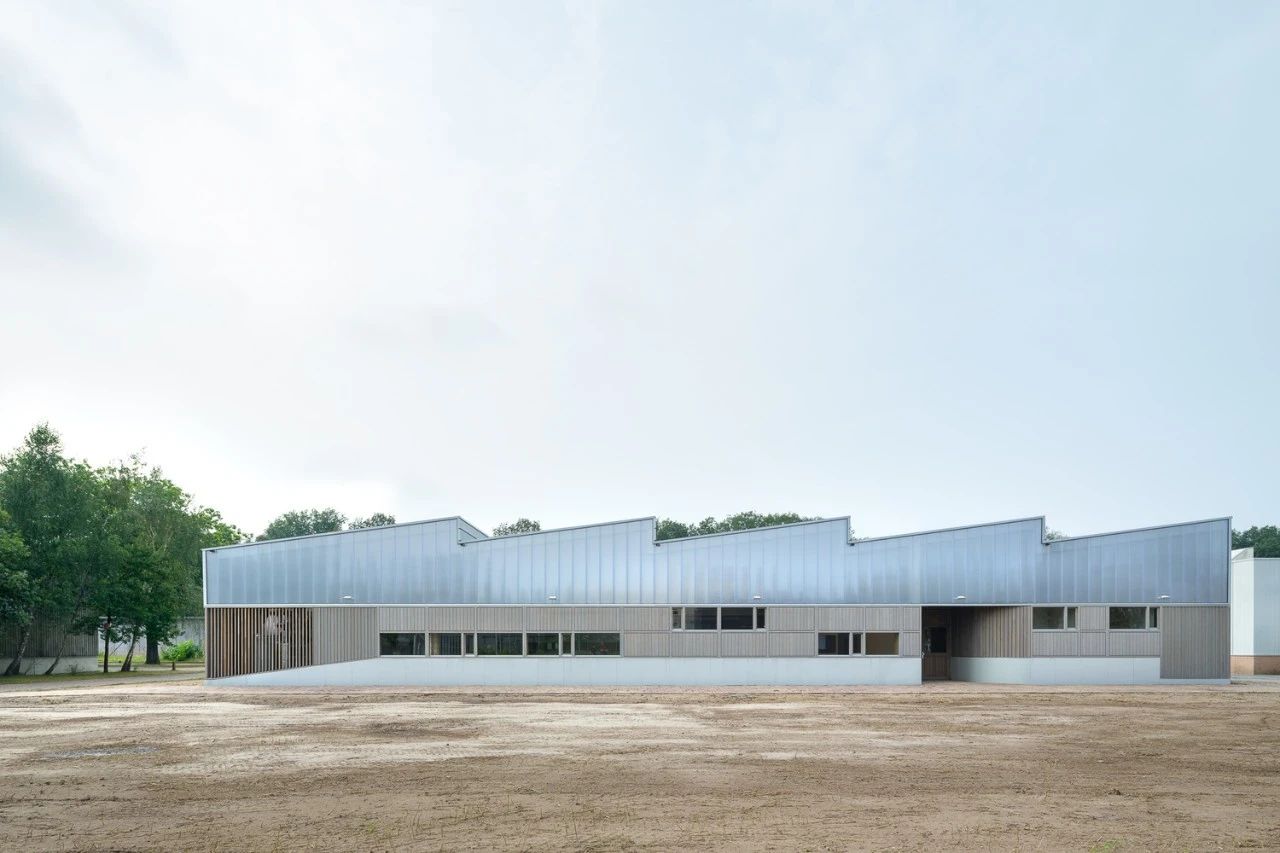
©Stijn PoelstralMaarten Meester

©Stijn PoelstralMaarten Meester
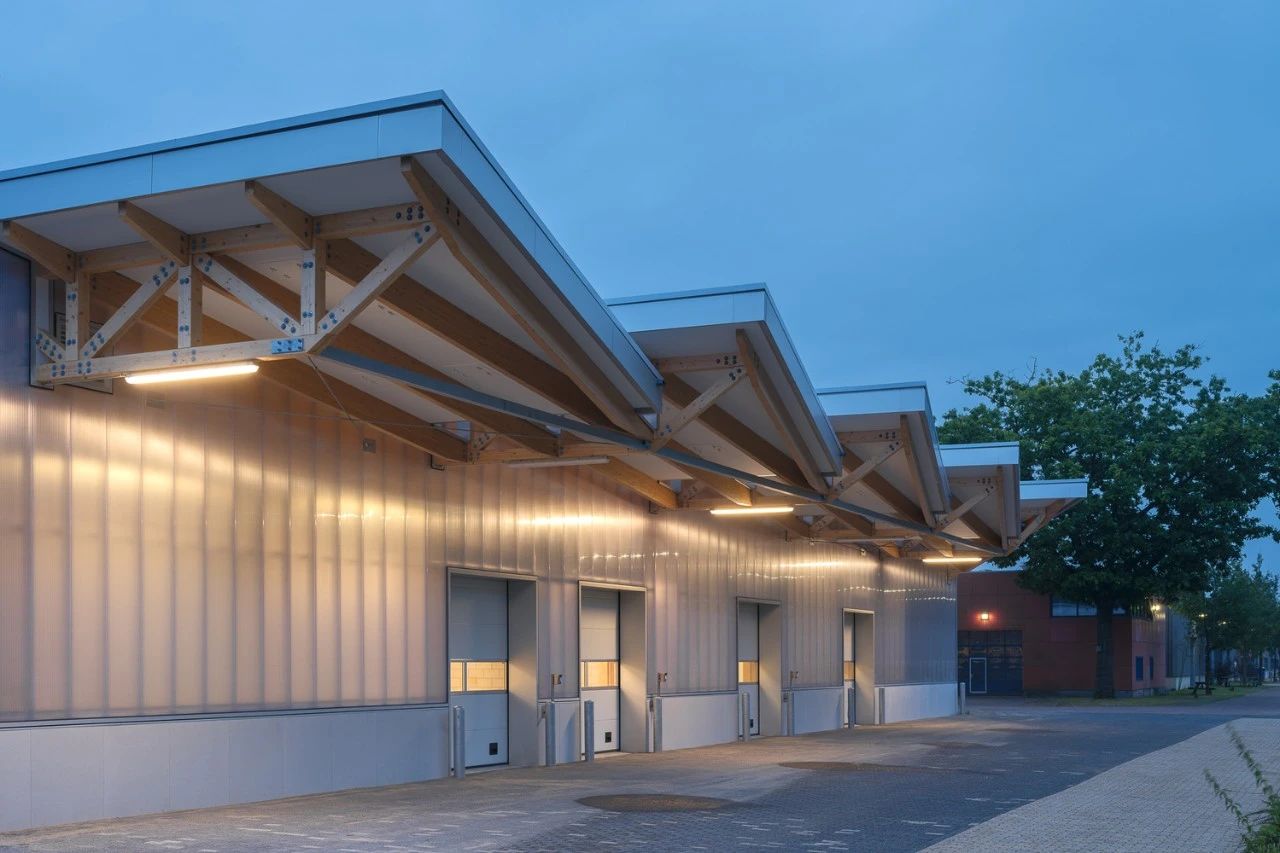
©Stijn PoelstralMaarten Meester
10
Ceramics
UCCA Tao Art Museum
Designer: Kenwu Kuma Architectural and Urban Design Office
Address: Xuanxing, China
The UCCA Ceramic Art Museum, designed by the highly respected Kengo Kuma Architectural and Urban Design Office (KKAA), has added a new style to Yixing, a city famous for its profound ceramic tradition, especially purple sand ceramic art. Yixing is known as the "Capital of Pottery", and the region has a long history of ceramic production, making it an ideal place to establish a museum specializing in ceramics.
The facade of the UCCA Ceramic Museum was developed in cooperation with local craftsmen to ensure that the design reflects the essence of Yixing's ceramic culture. The facades of the buildings are made of hand-made ceramic panels, which show a natural gradual change of kiln color, which is inspired by the famous purple sand in Yixing. This design method produces a rich variety of texture and visual expression, so that visitors can feel the "temperature" of ceramics in a practical way.

©Tian Fangfang

©Wing-i, GHA
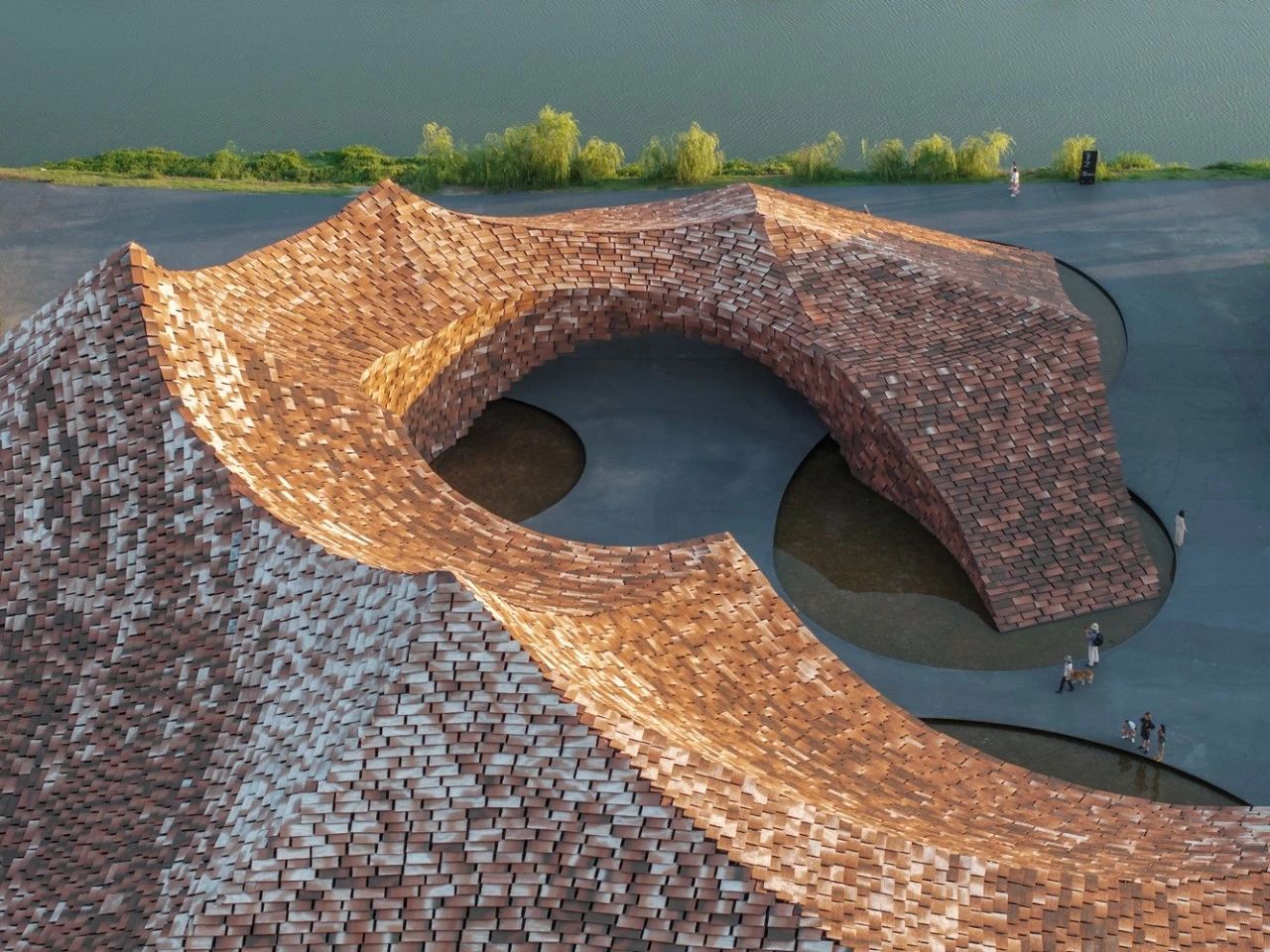
©Tian Fangfang
Huanglongshan Purple Sand Mineral Resources Exhibition Hall
Design: School of Architecture of Southeast University+Xuke Building
Address: Wuxi, China
Dingshu Town is located in the southeast of Yixing City, known as the "Tao Capital". Huanglong Mountain has been the source of high-quality purple sand raw materials since ancient times, which can be described as the "source of purple sand".
The project specifies the protection strategy for the site of Well 4, and designs the exhibition hall of purple sand mineral resources.
。The uniform ceramic colored glazed technology is used on the facade tiles, so that the facade presents a rich lighting effect under the light. But when we touch with our hands, we will experience different tactile sensations.
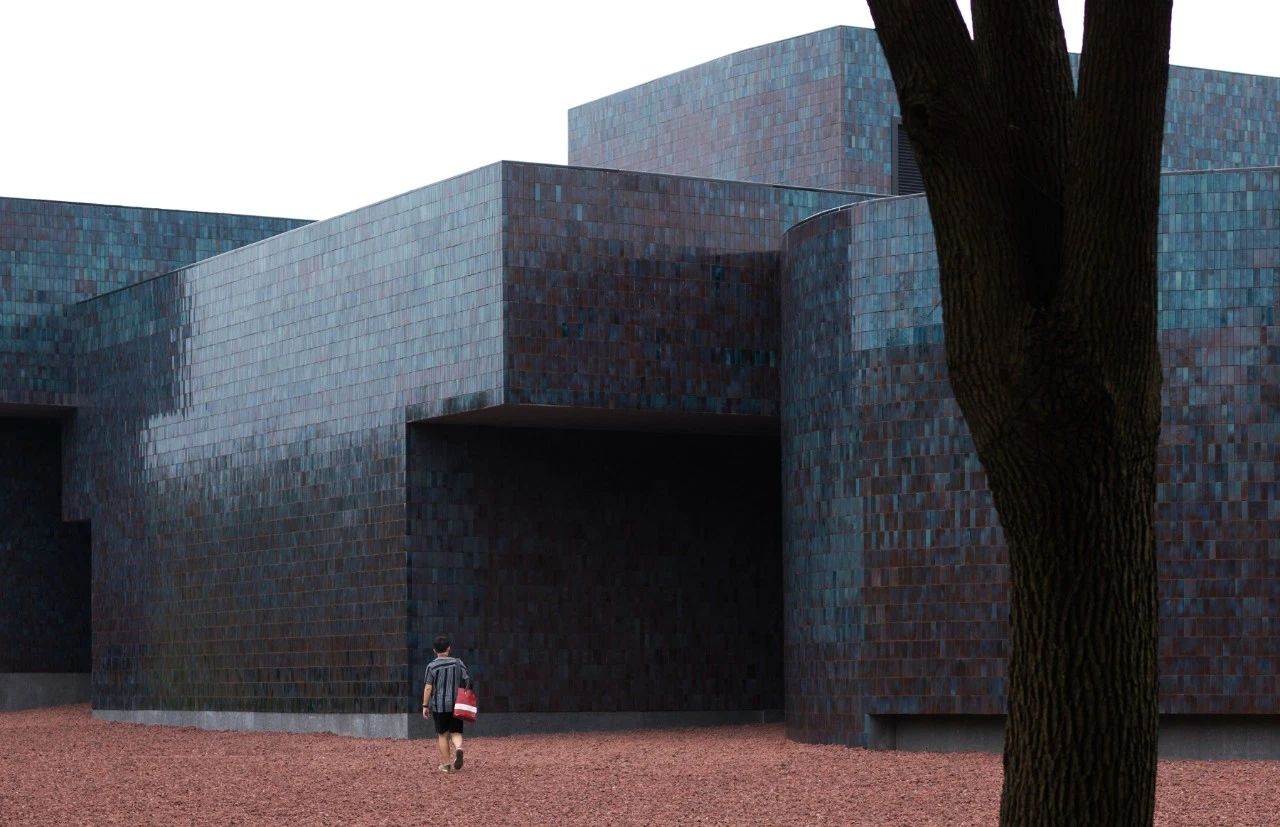
©Xuke Construction

©Xuke Construction

©Xuke Construction